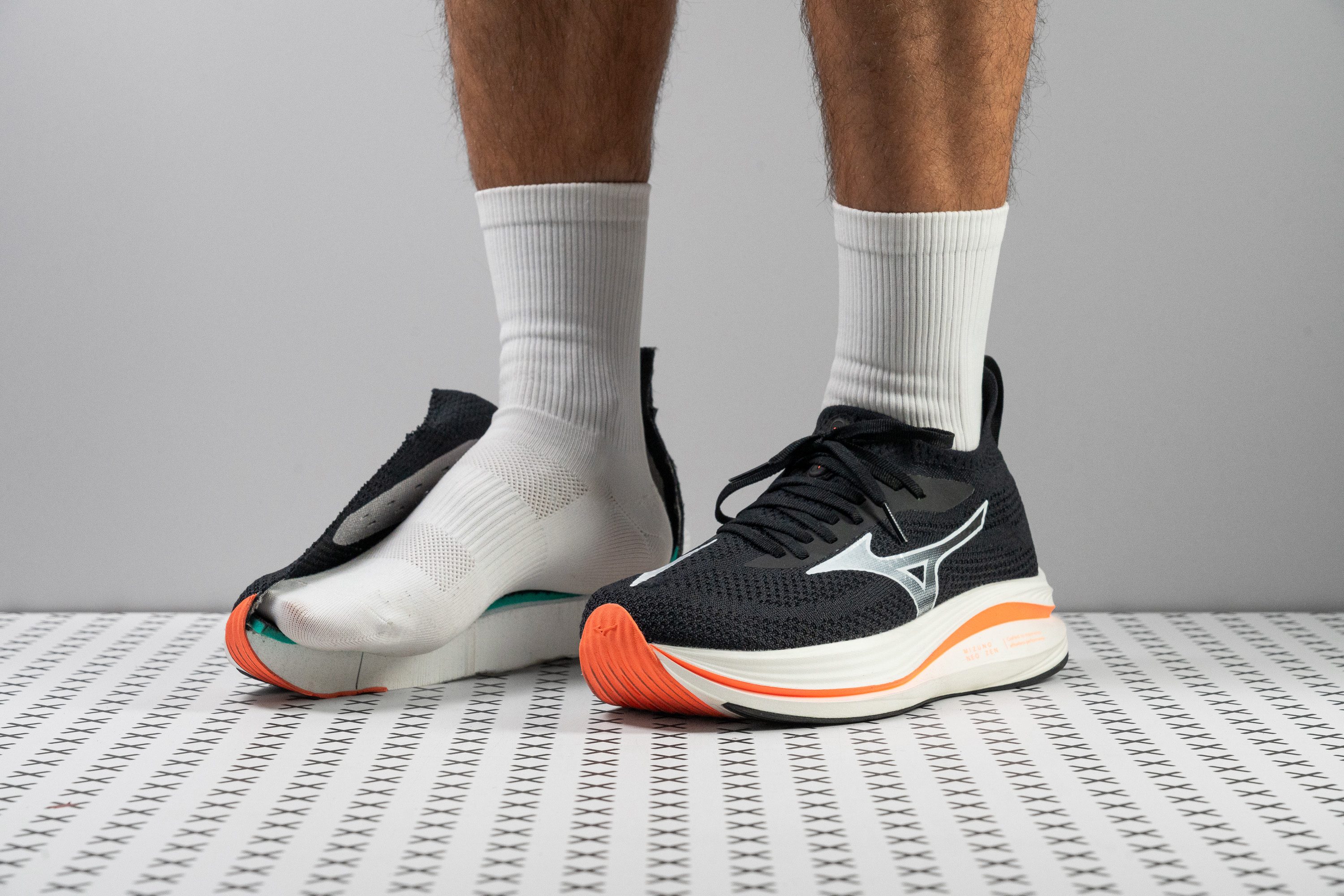Our verdict
- Top pick in best treadmill running shoes
- Top pick in best Mizuno running shoes
Pros
- Plush and bouncy foam
- Feather-light for a max-stack trainer
- Fun, agile ride
- Ideal for long runs
- Solid value for performance
- Comfortable and breathable knit upper
- Toebox resist heavy wear
- Eye-catching design
- Outsole grips and lasts
Cons
- Wobbly for those needing support
- Heel sink slows rearfoot strikers
- Upper lacks padding and structure
- Enerzy NXT firms up in cold conditions
Audience verdict
- Top 2% in road running shoes
- Top 12% in Mizuno running shoes
- Top 22% most popular running shoes
Comparison
The most similar running shoes compared
+ + Add a shoe | |||||
|---|---|---|---|---|---|
| Audience score | 93 Superb! | 91 Superb! | 86 Good! | 89 Great! | |
| Price | $150 | $170 | $150 | $150 | |
| Pace | Daily runningTempo | Daily running | Daily running | Daily running | |
| Shock absorption | High | High | High | - | |
| Energy return | High | Moderate | Low | - | |
| Traction | Moderate | Moderate | High | - | |
| Arch support | Neutral | Neutral | Neutral | Neutral | |
| Weight lab Weight brand | 8.3 oz / 234g 8.5 oz / 240g | 9.6 oz / 271g 9.8 oz / 277g | 9.1 oz / 258g 9.3 oz / 265g | 9.6 oz / 272g 9.4 oz / 266g | |
| Lightweight | ✓ | ✗ | ✗ | ✗ | |
| Drop lab Drop brand | 7.0 mm 6.0 mm | 10.0 mm 8.0 mm | 8.3 mm 10.0 mm | 6.5 mm 4.0 mm | |
| Strike pattern | Mid/forefoot | HeelMid/forefoot | HeelMid/forefoot | Mid/forefoot | |
| Size | True to size | True to size | - | True to size | |
| Midsole softness | Soft | Soft | Soft | Balanced | |
| Difference in midsole softness in cold | Normal | Normal | Normal | Normal | |
| Toebox durability | Good | Good | Decent | - | |
| Heel padding durability | Good | Good | Good | - | |
| Outsole durability | Good | Bad | Decent | - | |
| Breathability | Moderate | Moderate | Moderate | Moderate | |
| Width / fit | Medium | Medium | Medium | Narrow | |
| Toebox width | Medium | Medium | Wide | - | |
| Stiffness | Moderate | Moderate | Moderate | Stiff | |
| Torsional rigidity | Moderate | Moderate | Stiff | Moderate | |
| Heel counter stiffness | Flexible | Moderate | Stiff | Moderate | |
| Rocker | ✗ | ✗ | ✗ | ✓ | |
| Heel lab Heel brand | 41.0 mm 40.0 mm | 40.7 mm 42.0 mm | 37.5 mm 39.0 mm | 39.6 mm 39.0 mm | |
| Forefoot lab Forefoot brand | 34.0 mm 34.0 mm | 30.7 mm 34.0 mm | 29.2 mm 29.0 mm | 33.1 mm 35.0 mm | |
| Widths available | NormalWide | NormalWide | NormalWide | NormalWide | |
| Orthotic friendly | ✓ | ✓ | ✓ | ✓ | |
| Season | All seasons | All seasons | All seasons | All seasons | |
| Removable insole | ✓ | ✓ | ✓ | ✓ | |
| Ranking | #5 Top 2% | #27 Top 8% | #191 Bottom 48% | #108 Top 30% | |
| Popularity | #79 Top 22% | #207 Bottom 44% | #130 Top 35% | #218 Bottom 41% |
Who should buy
We tested the Neo Zen in the lab, and we think it’s a great choice for:
- Runners looking for a high-stack daily trainer that blends comfort, fun, and performance in a unique way.
- Those needing a durable everyday shoe that can handle tempo runs when needed thanks to its lightweight build.
- Marathoners who want a super-soft, leg-saving option for easy and recovery days.
- Fans of knit uppers!

Who should NOT buy
We believe the Neo Zen isn’t the best choice for runners who need stability or a more grounded feel. After testing, we found that the soft foam creates a sink-in sensation that may feel unstable for many. If you're after a smoother and more balanced ride, we suggest checking out the Hoka Clifton 10 or the Adidas Adistar 3—both offer a more stable platform for daily training.
Additionally, we think the knit upper, while stretchy and breathable, lacks the structure and padding some runners expect in a daily trainer. In our experience, the heel fit can feel loose. For a similar bouncy shoe with a more traditional, secure feel, we recommend trying the ASICS Novablast 5 instead.
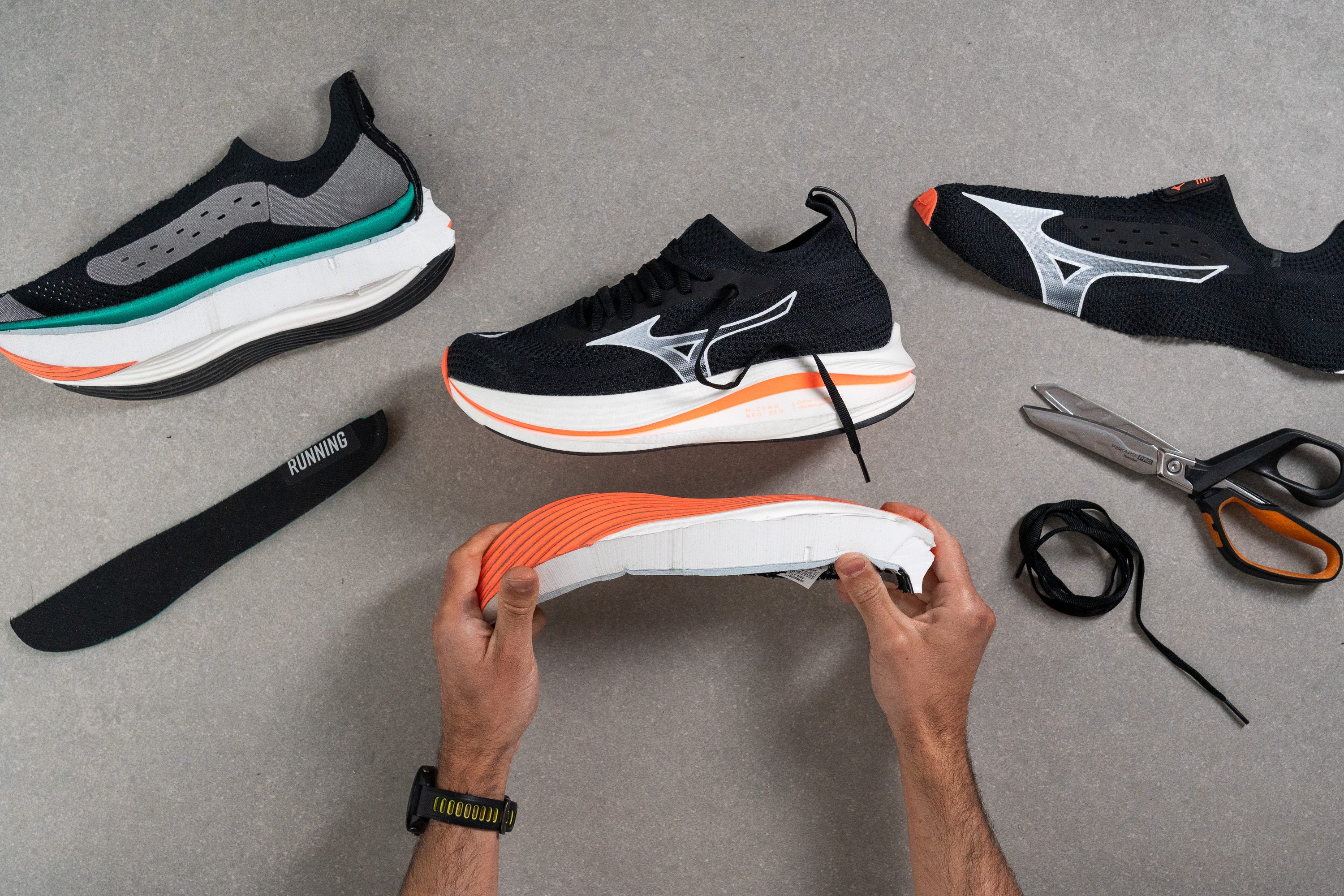
Cushioning
Shock absorption
If you're looking for a daily trainer with top-tier joint protection, the Neo Zen looks like the perfect shoe. It features a mega-thick slab of foam that reached an impressive 158 SA in our lab test—far beyond most competitors. Up front, it scored 129 SA, also comfortably above average.
However, this max-cushioned setup has trade-offs. If you're a lightweight runner or prefer a more ground-connected ride, you'll likely feel there's just too much foam underfoot.
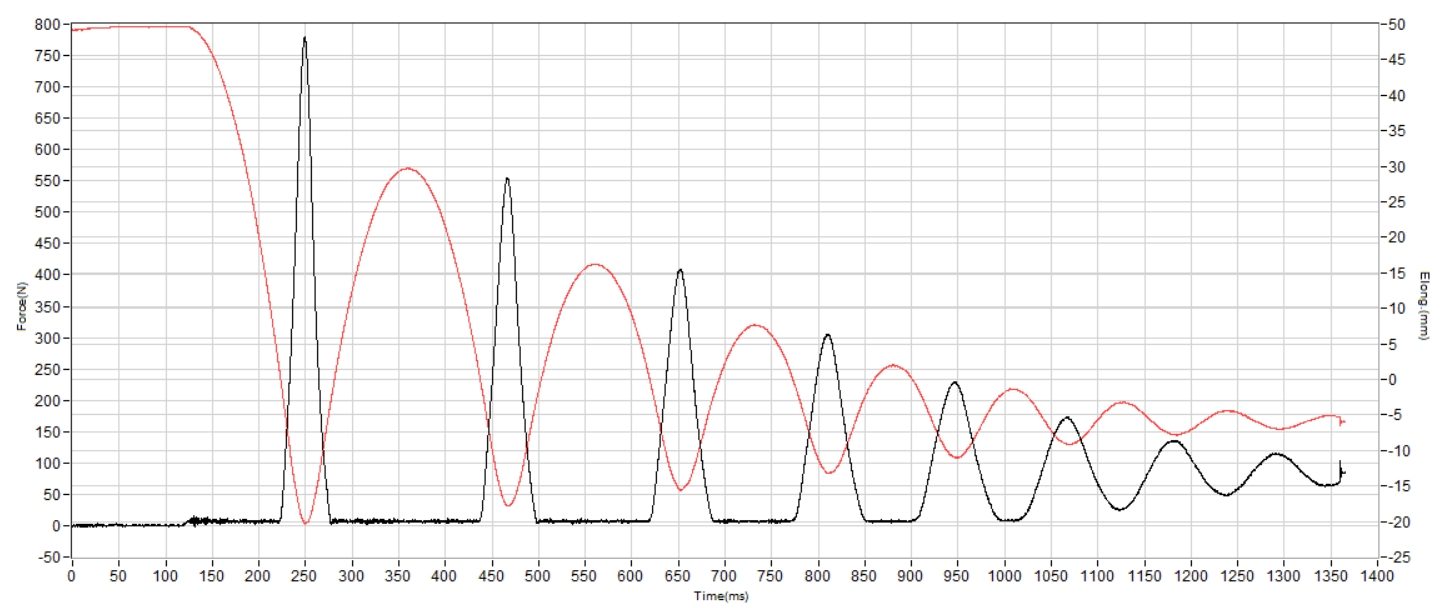
| Neo Zen | 158 SA |
| Average | 129 SA |
Energy return
One of our biggest critiques of this shoe’s cousin, the Neo Vista, was its underwhelming energy return from basic EVA foam. That’s why Mizuno moved to a supercritical TPU blend—an upgrade that truly paid off. We measured a supershoe-like 71.7% bounce in the heel, which is a huge leap forward.
| Neo Zen | 71.7% |
| Average | 58.5% |
Heel stack
We all know that running shoes are getting taller and taller—we see it daily here in the lab. But daily trainers pushing past 40 mm? That’s quickly becoming normal, and the Neo Zen proves it with confidence.
We measured a sky-high 41.0 mm in the heel. That makes this shoe a full maximalist design, ideal for those who prefer a zero-ground-feel ride or for heavier runners needing a joint-friendly, cushion-loaded experience.

| Neo Zen | 41.0 mm |
| Average | 34.8 mm |
Forefoot stack
At 34.0 mm, the forefoot is even more impressive than the heel—especially when compared against the average running shoe. No matter your footstrike, there’s always a generous, foam-packed platform underfoot.
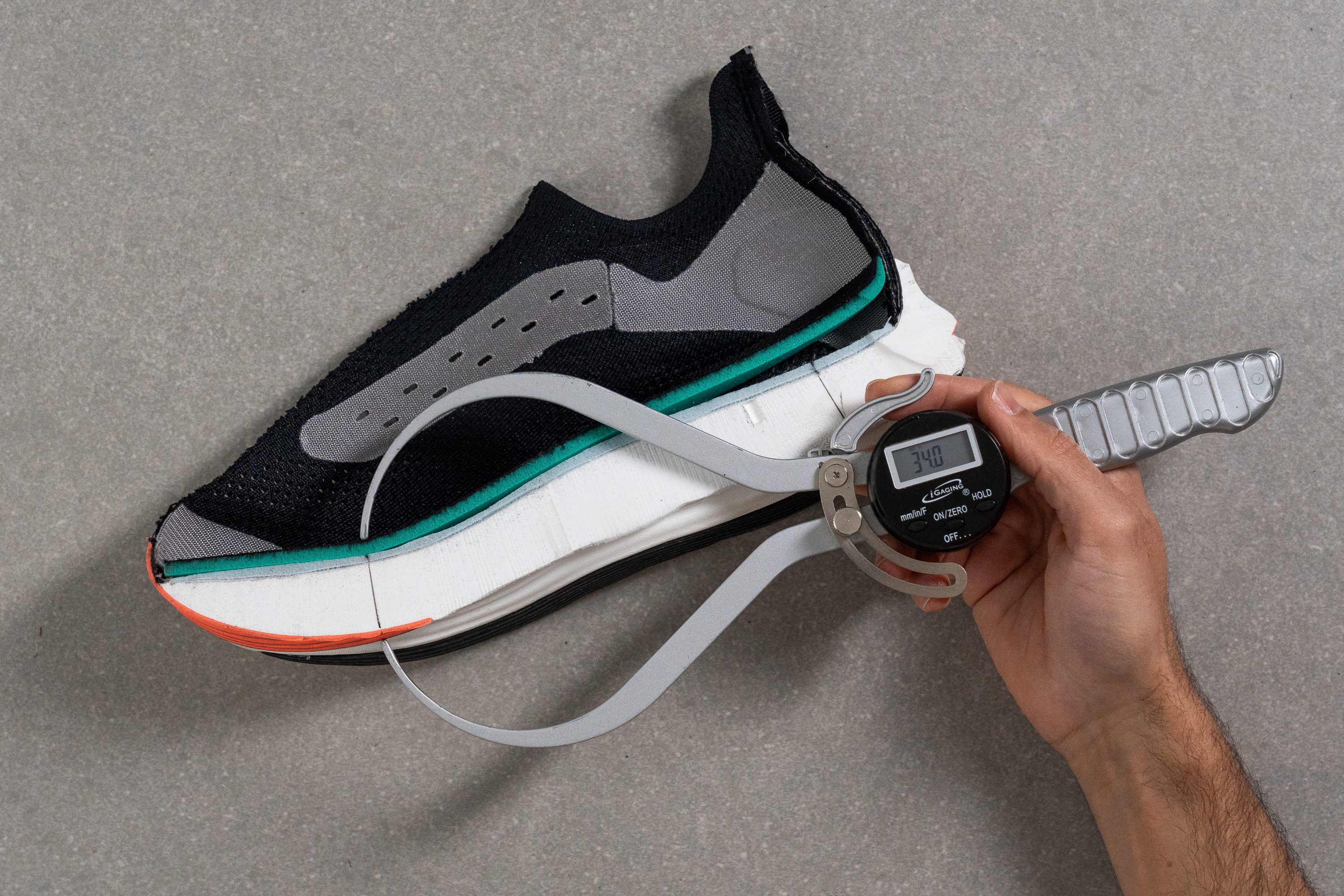
| Neo Zen | 34.0 mm |
| Average | 26.2 mm |
Drop
We measured a medium drop of 7.0 mm, which on paper, works well for all footstrikes. However, we think it’s not the top pick for heel strikers—the rearfoot is ultra-soft and creates a sink-in sensation that slows momentum.
On the flip side, midfoot and forefoot strikers will enjoy a smooth ride that feels lively and naturally forward-rolling.
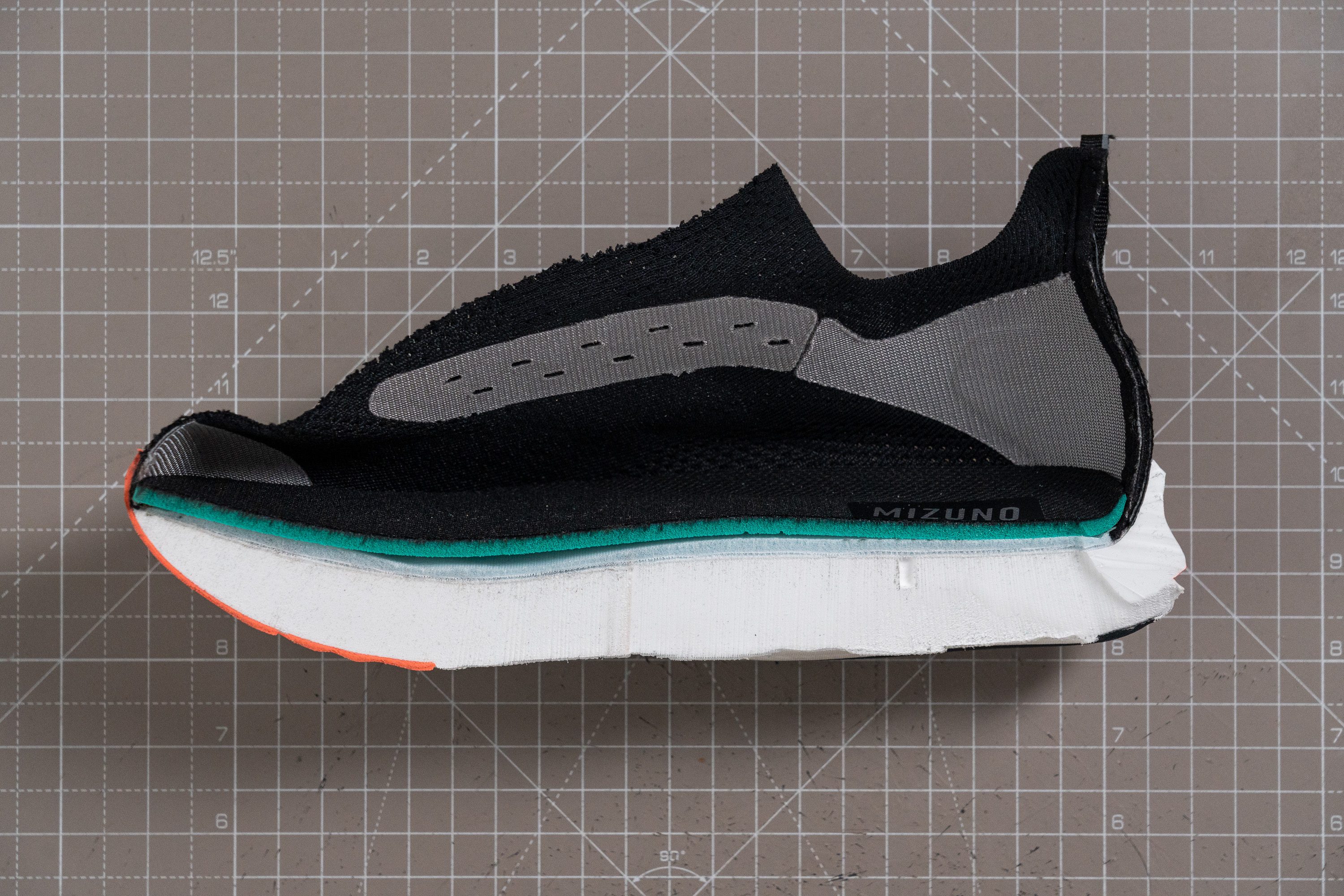
| Neo Zen | 7.0 mm |
| Average | 8.6 mm |
Midsole softness
Mizuno has pulled off a remarkable comeback in recent years with standout shoes like the Neo Vista—showcasing bold designs and next-gen foams. A major part of that success is Enerzy NXT.
This foam is extremely plush. We measured 13.5 HA with our durometer, which confirmed our first impression and places the Neo Zen among the softest daily trainers available. For runners needing extra stability, it might feel overly plush, but Mizuno managed to avoid bottoming out by packing in a massive slab of foam as we proved before.
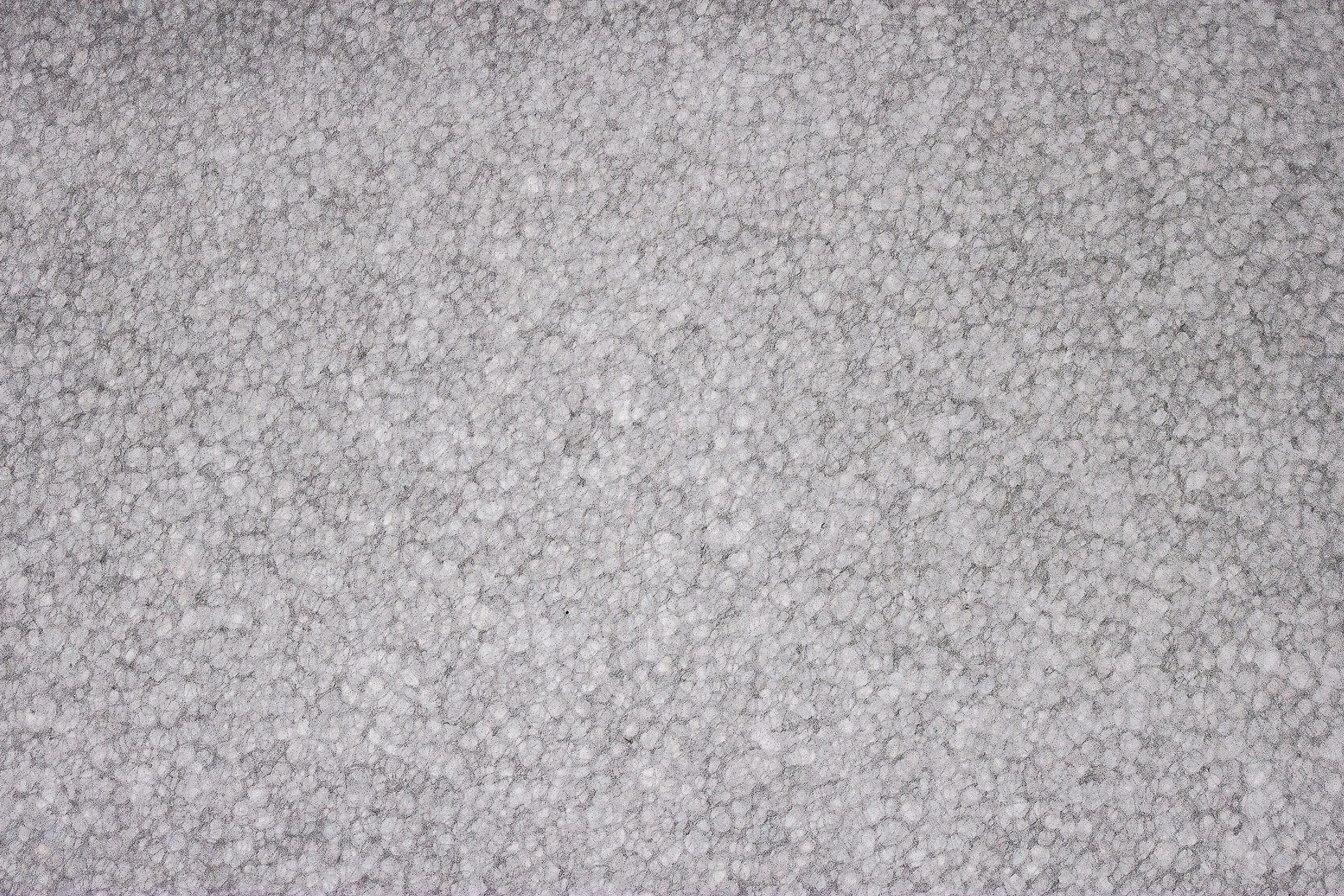
And there’s been some talk about what this midsole is really made of. So we sliced the shoe in half, cut out a piece of foam, and examined it under our microscope. The results were clear—it’s a nitrogen-infused, supercritical TPU, with tighter, smaller bubbles than usual.
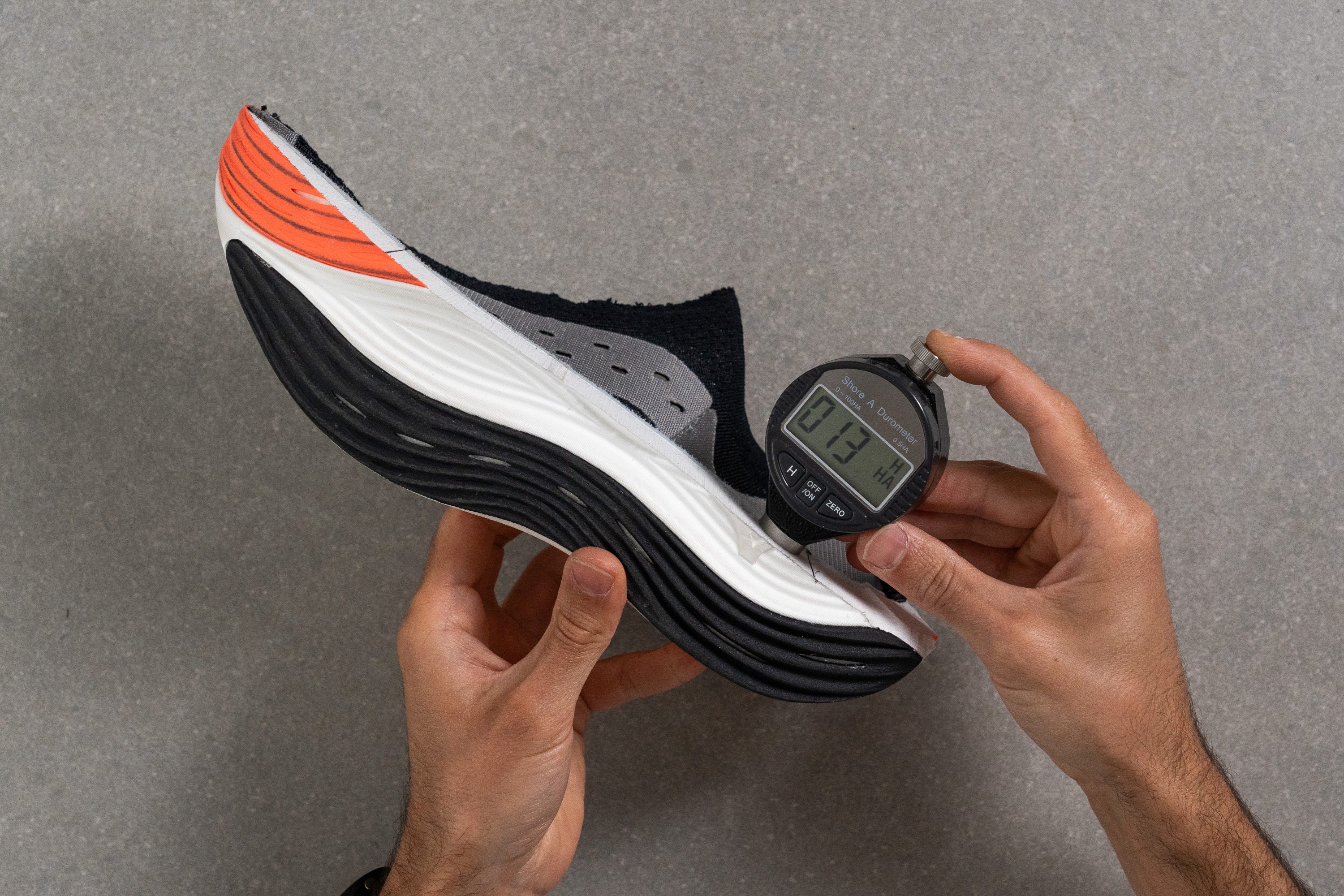
| Neo Zen | 13.5 HA |
| Average | 20.4 HA |
Rocker
Despite having a thick midsole, the Neo Zen comes with a very light rocker by modern standards. That makes it better for runners who don’t enjoy an aggressive-rocker feel during their runs. The heel curvature is subtle too, which backs up our view that while it works for most, the Neo Zen feels especially natural for midfoot strikers.
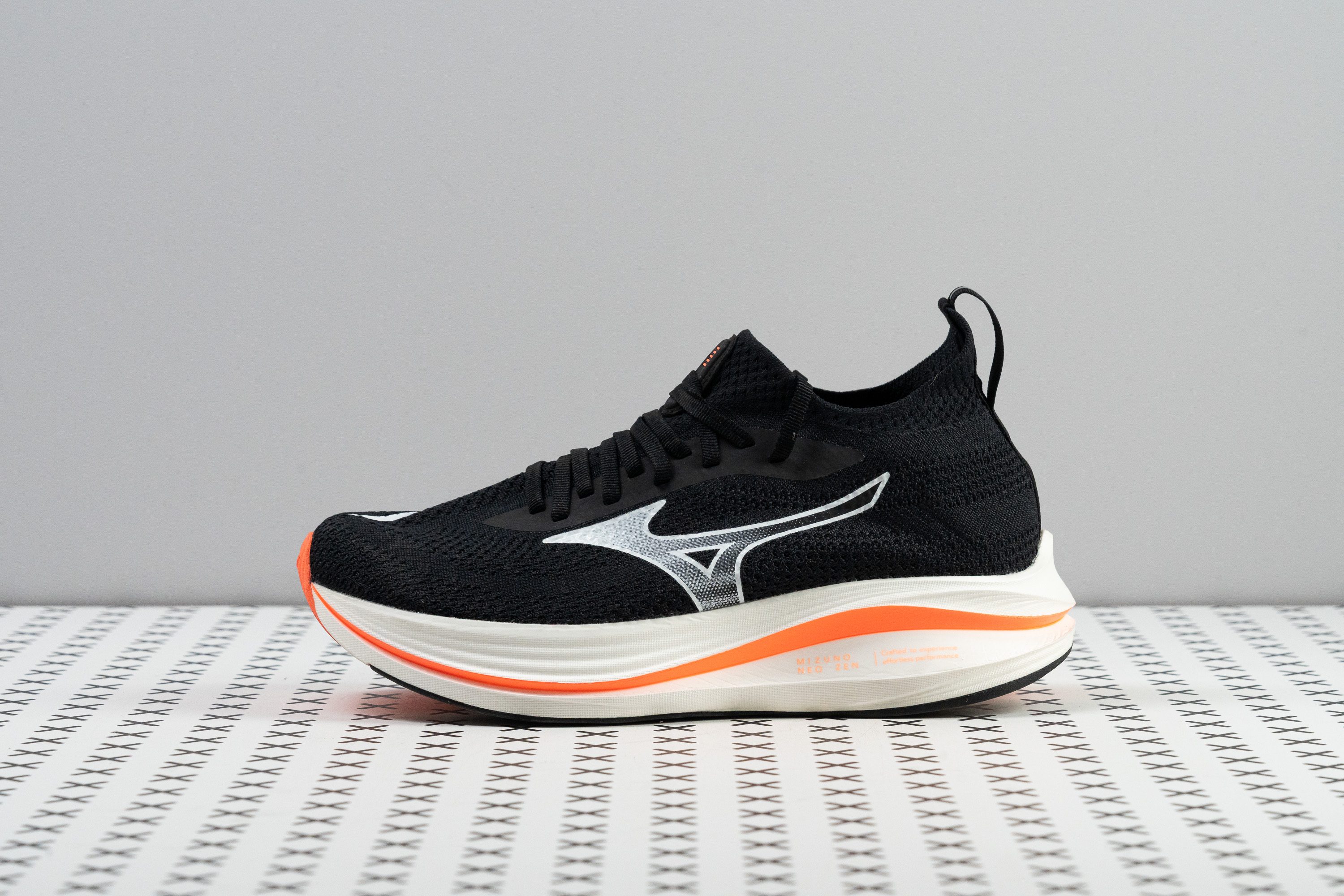
But why can it get away with a less exaggerated rocker compared to other thick shoes? Two reasons: it’s more flexible, and the ultra-soft foam bends with minimal force.
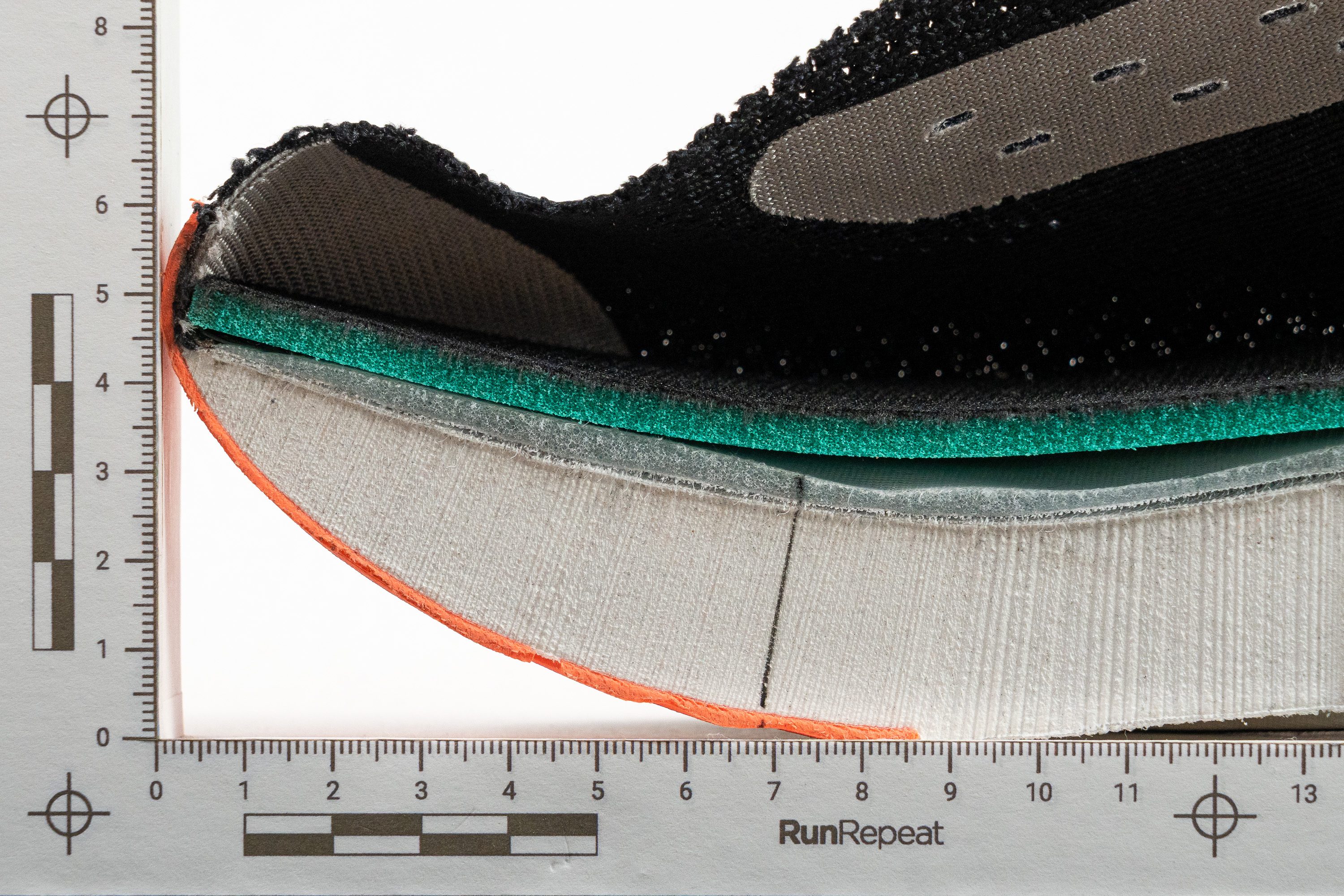
Size and fit
Size
Mizuno Neo Zen fits true to size (84 votes).
Width / Fit
Knit-based uppers can be a bit misleading when it comes to fit, as their extra-stretchy nature compared to mesh often makes them feel roomier than what our lab measurements actually show. That’s exactly the case with the Neo Zen.
This soft-and-flexible material is far less rigid than mesh and adapts nicely to the shape of the foot. That’s why—even though we measured just 93.7 mm at the widest point—it feels like a standard daily trainer with an average, comfort-driven fit, not very tight or restrictive.
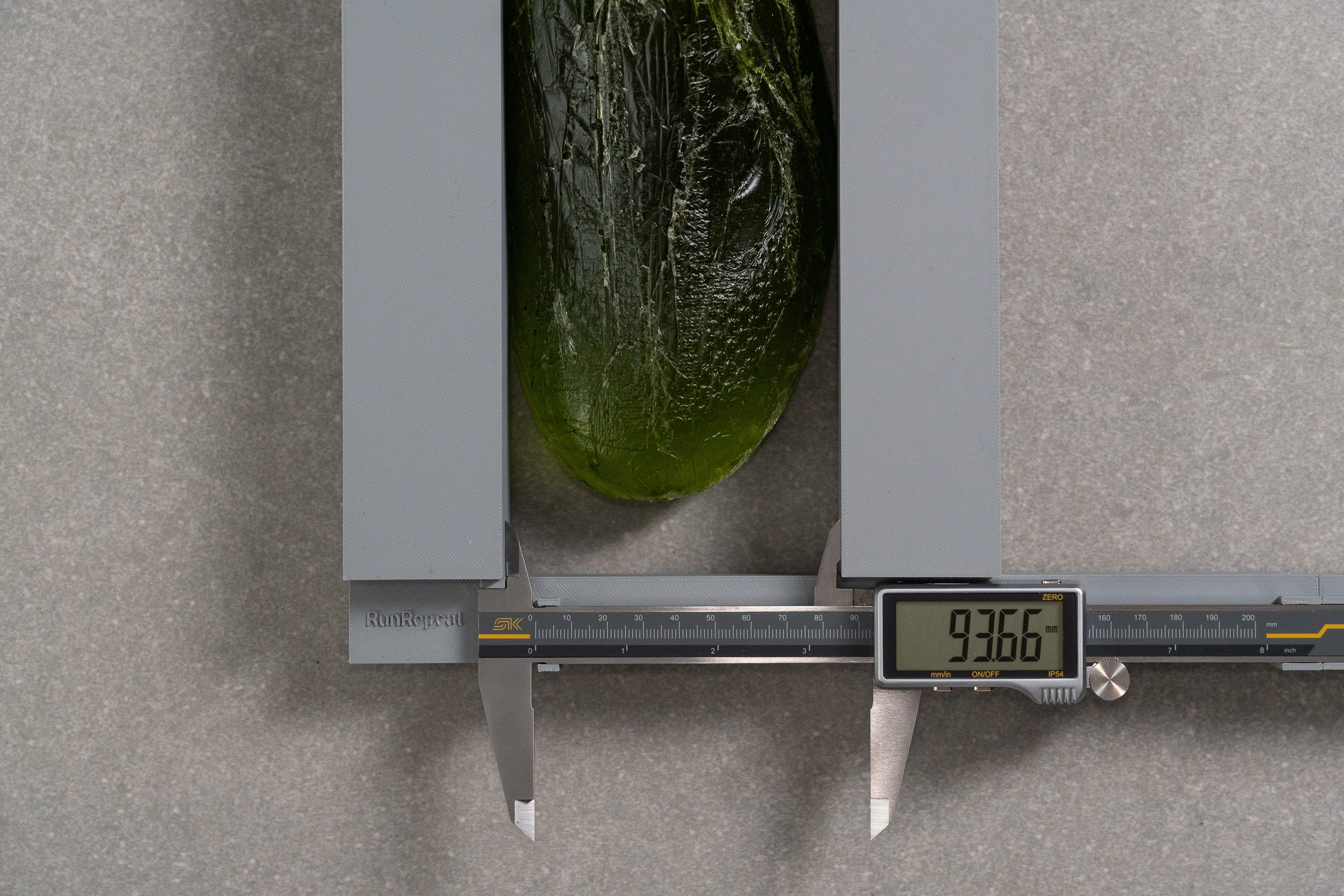
| Neo Zen | 93.7 mm |
| Average | 95.1 mm |
Toebox width
In terms of toebox width, the Neo Zen stays true to its daily-trainer-like fit. At 73.4 mm, it matches the average toebox width of road running shoes.
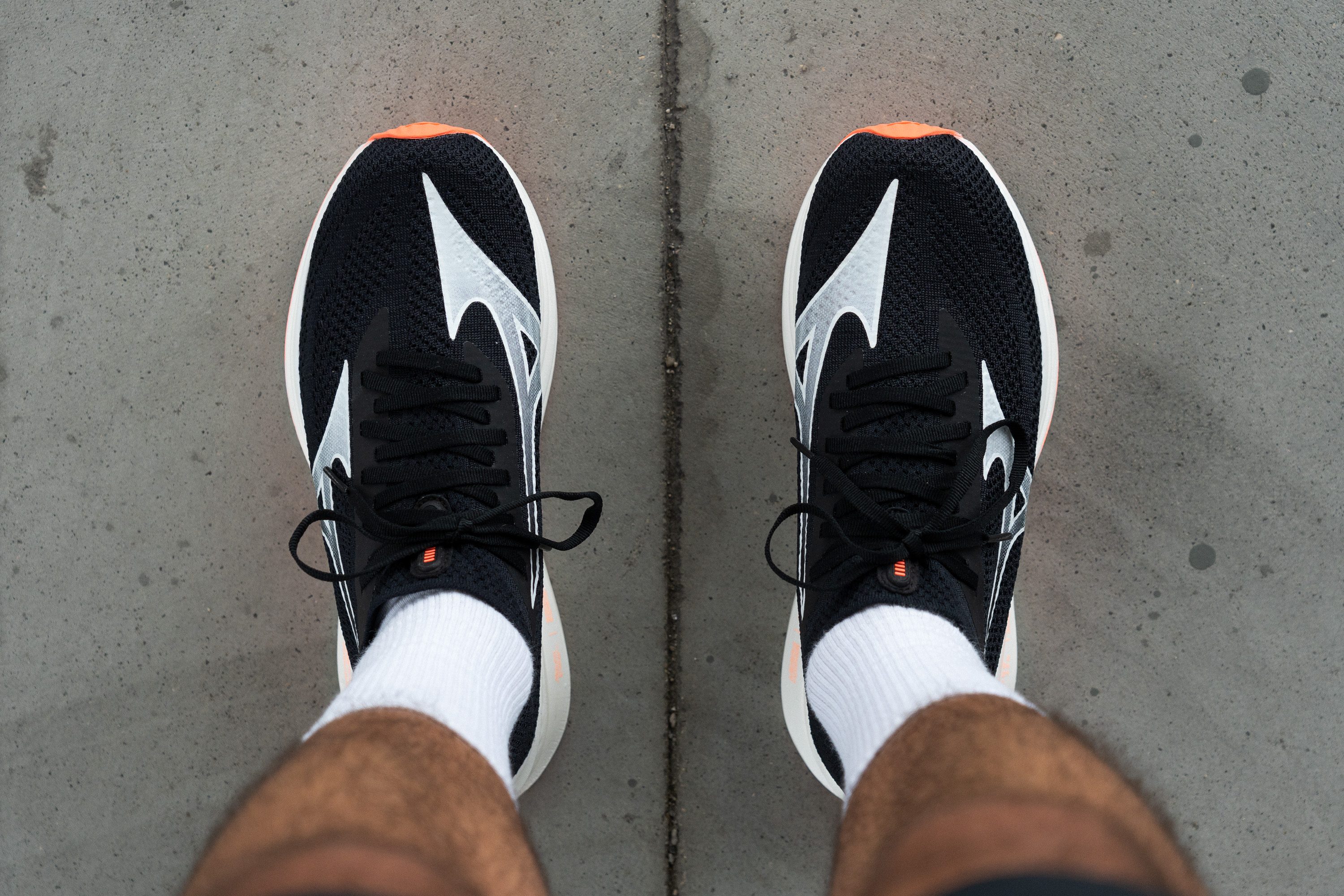
However, remember that since it features a knit upper, there’s a bit more real space for toe splay—the material doesn’t restrict toe movement much.
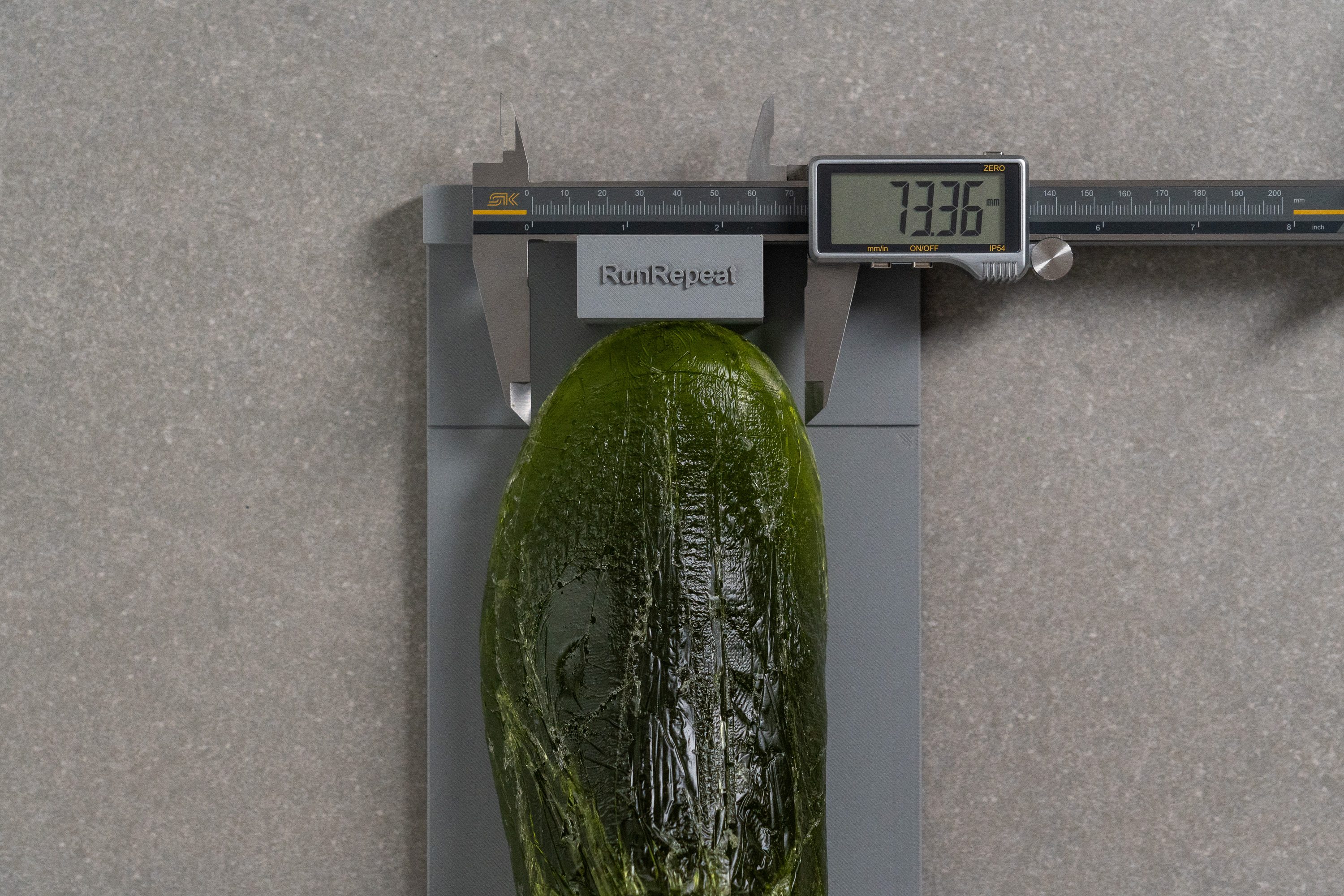
| Neo Zen | 73.4 mm |
| Average | 73.3 mm |
Toebox height
We found plenty of toe room as soon as we slipped the Neo Zens on—no discomfort, no tight spots, just an easy and pressure-free fit right from the start.
Afterward, we measured the toebox height at 27.0 mm, offering a roomy fit that should feel great even for runners sensitive to pressure.
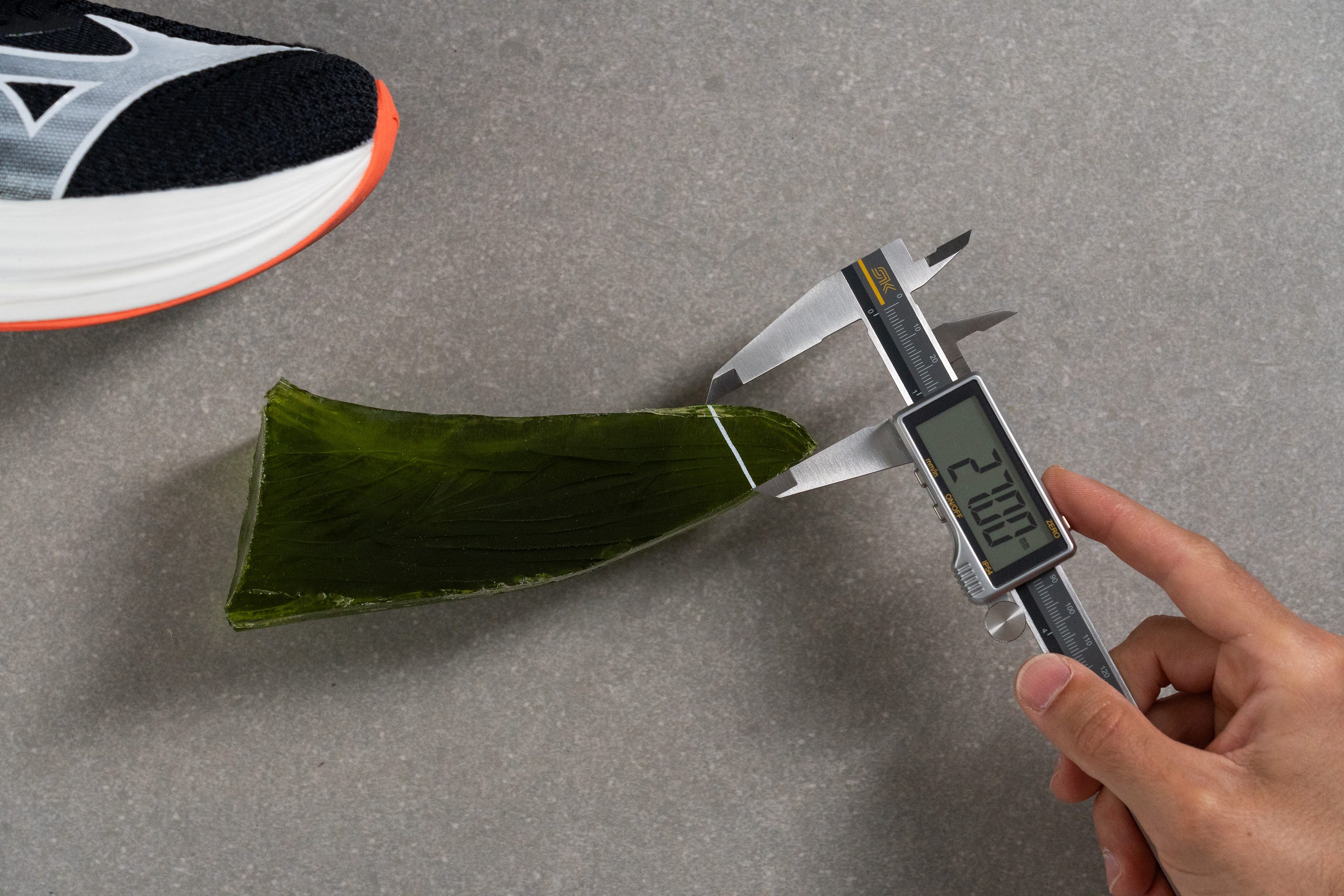
| Neo Zen | 27.0 mm |
| Average | 27.1 mm |
Traction / Grip
Traction test
Using our custom machine to test grip, we discovered that the Neo Zen isn't the top performer in its category, but still does a decent job.
Its 0.38 score isn’t bad for a shoe with a heavily-exposed midsole and offers solid grip on dry ground. On rainy days, it holds up fine for occasional runs, but if you often face slick pavement, the ASICS Gel Nimbus 27 might be a smarter choice.
| Neo Zen | 0.38 |
| Average | 0.48 |
Outsole design
The outsole of the Neo Zen follows Mizuno’s recent design trend, much like the Neo Vista—which has built a solid fanbase over the past year.
A large center cutout leaves a big section of foam exposed. This helps keep the shoe feather-light but also limits grip on wet surfaces and reduces durability on rough or rocky terrain.
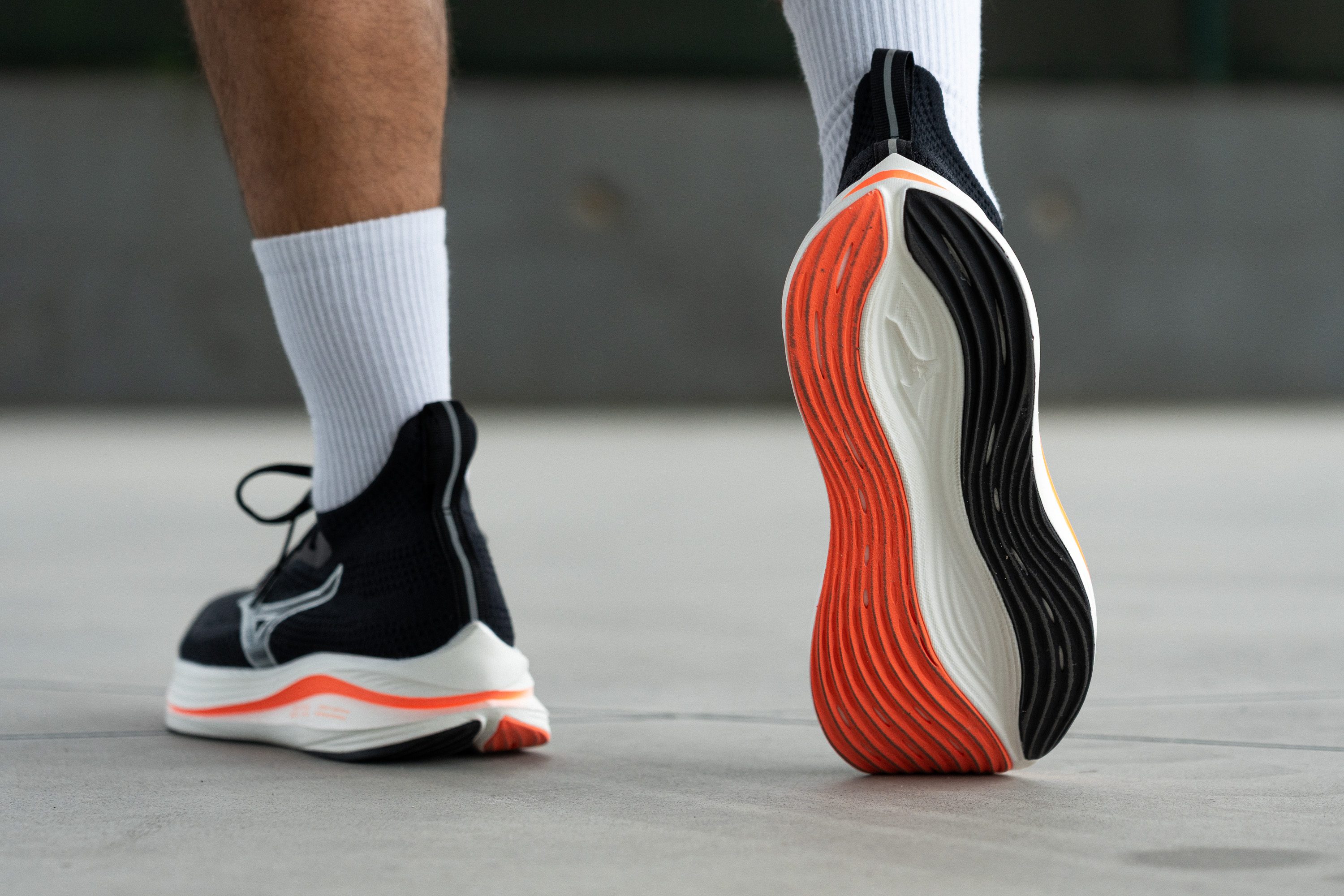
Flexibility / Stiffness
We were excited to run our bend machine, as the Neo Zen showed a great mix of towering stack height and smooth flex. It scored 12.8N—perfect for runners seeking an ultra-cushy yet bendable shoe for relaxed long runs.

| Neo Zen | 12.8N |
| Average | 15.3N |
Weight
The Enerzy NXT foam feels fantastic underfoot thanks to its soft-and-bouncy character, but there’s more—it’s also extremely lightweight. That’s the only way to explain how a behemoth shoe like this lands at just 8.25 oz or 234g.
For us, this has to be one of the Neo Zen’s standout qualities—delivering a rare mix of joint-friendly cushioning and feather-light build that’s hard to find in other high-stack trainers.
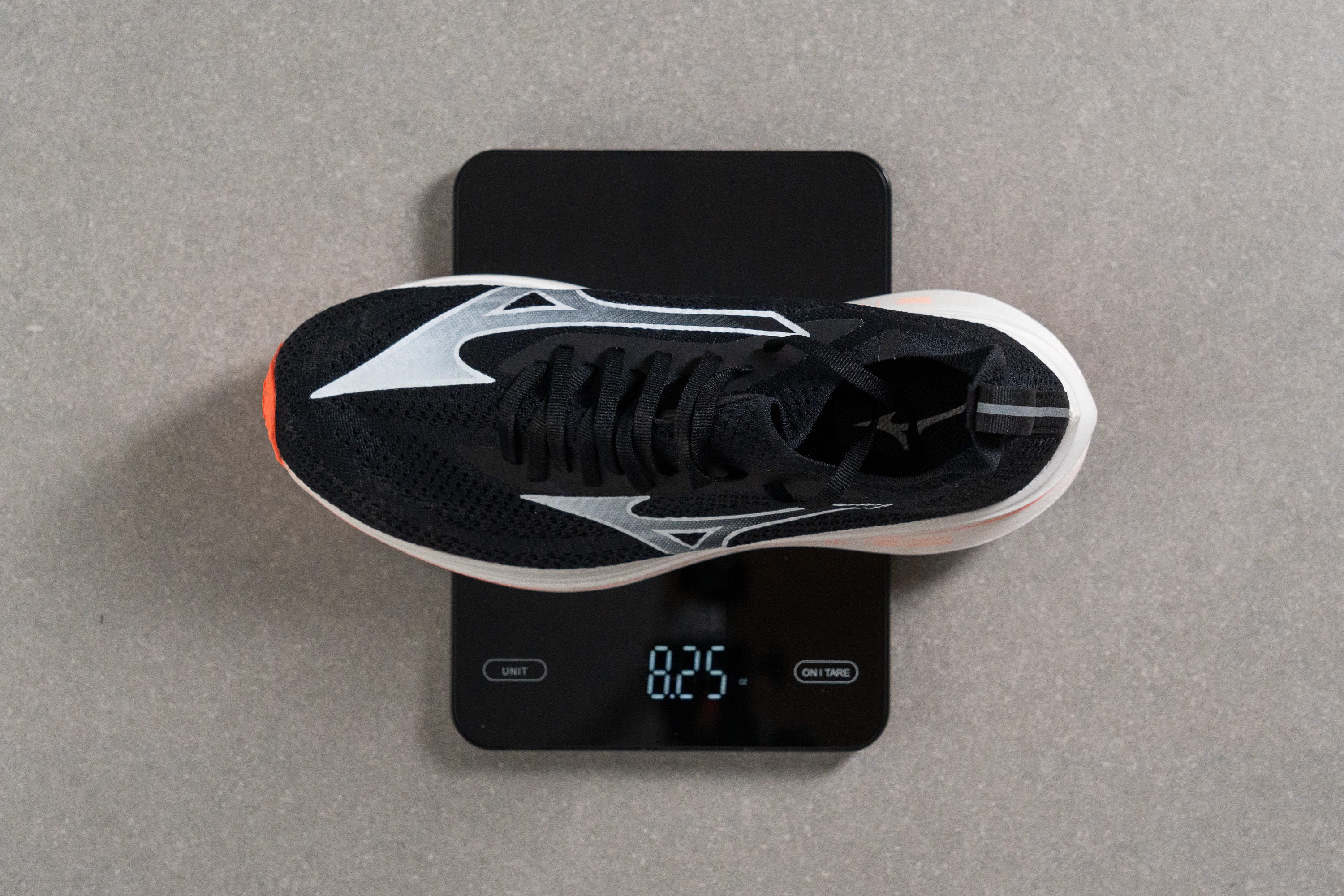
| Neo Zen | 8.3 oz (234g) |
| Average | 9.3 oz (264g) |
Breathability
One of the common downsides we often see with knit-based uppers is their poor ventilation. This material tends to be thicker and less breathable—trapping warm air in the toebox and making it a weak option for summer runs.
But in the case of the Neo Zen, Mizuno took a smarter approach. We believe they crafted a year-round upper that avoids the usual pitfalls of knit, and in our breathability test, it earned a solid 4/5 score.
The secret lies in the rounded ventilation holes positioned across the toebox. As soon as we moved the shoe over a strong light, those airy cutouts lit up clearly.
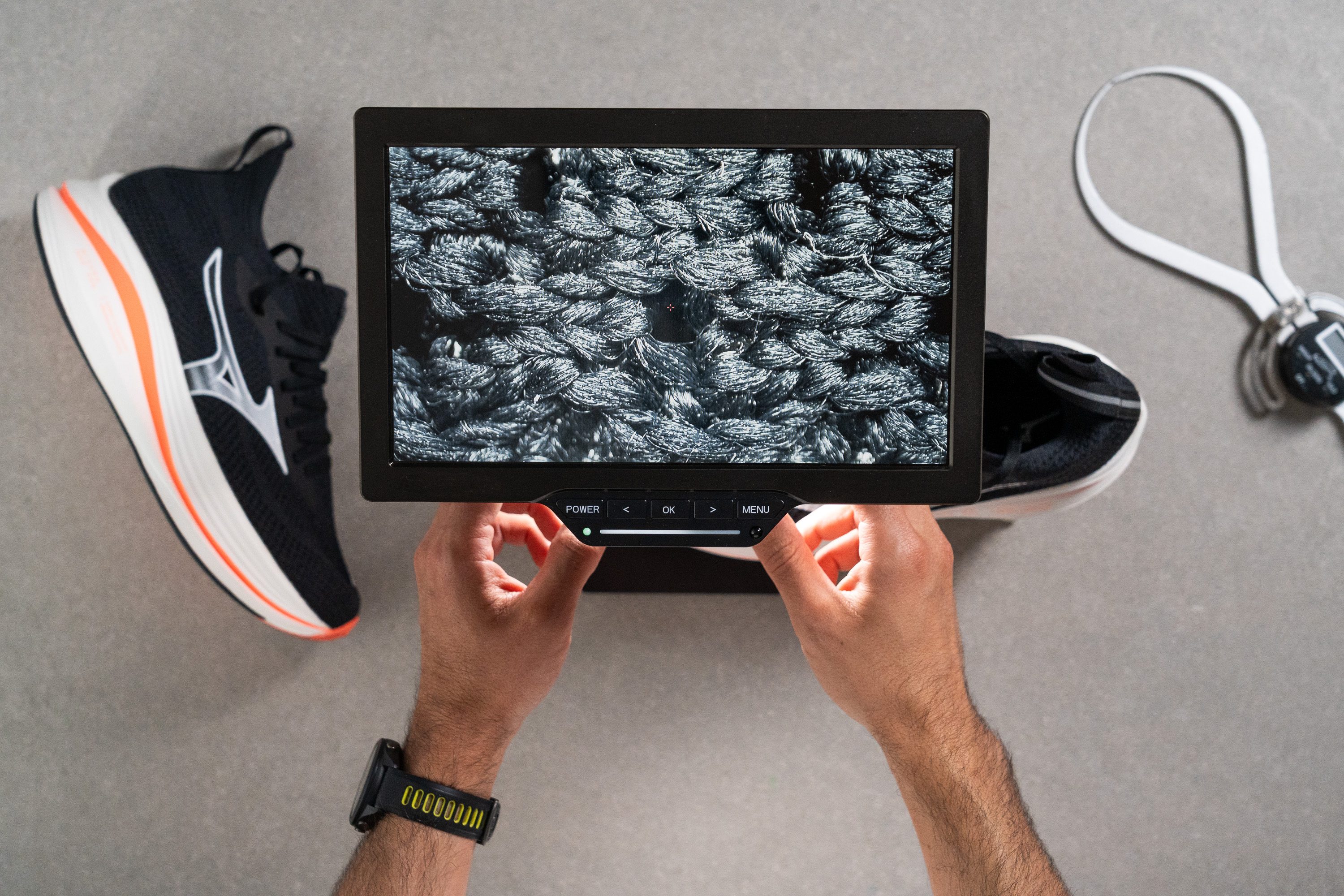
Curious to explore this further, we placed the upper under our microscope.
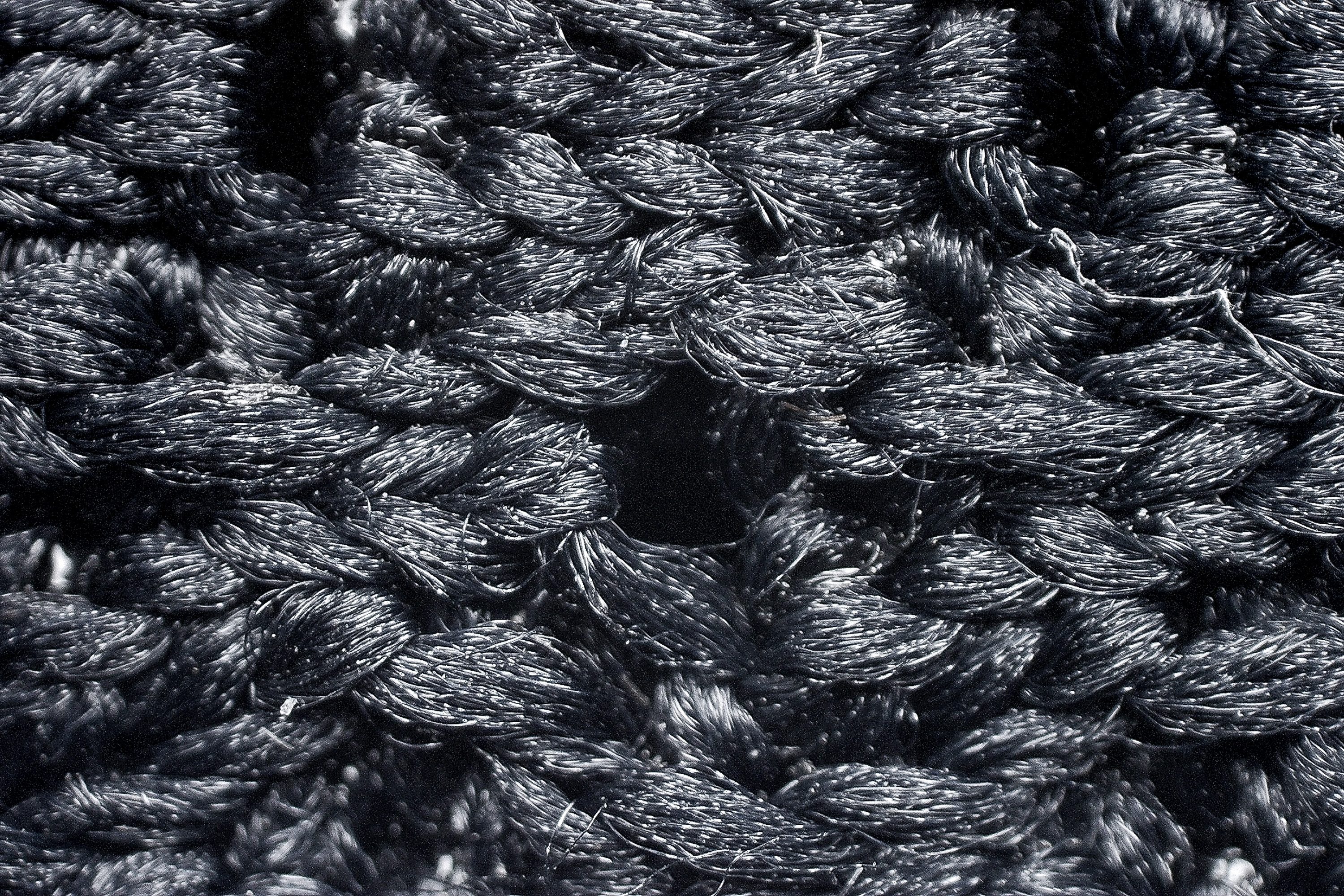
What we discovered was a tightly-knit weave with consistent openings. The holes looked slightly smaller than expected, but there’s no second internal layer blocking airflow, unlike in most double-layer engineered mesh uppers.
If you’re hoping for a plush-and-pillowy upper packed with foam, though, you’ll be disappointed. Mizuno skipped extra padding in favor of a featherweight design.
| Neo Zen | 4 |
| Average | 3.7 |
Stability
Lateral stability test
While some daily trainers in the past two years have brought impressive stability, that’s not the case with the Neo Zen. Its squishy foam and sky-high stack make true stability out of reach.
That said, it remains reasonably stable for neutral runners thanks to its wide-platform heel and the long, stability-enhancing central groove in the outsole.
Torsional rigidity
With a score of 3/5, we wouldn’t call this shoe rigid. In fact, for such a towering stack height, it’s one of the most flexible options we’ve tested in this maximalist category.
| Neo Zen | 3 |
| Average | 3.5 |
Heel counter stiffness
Another sign that Mizuno didn’t prioritize stability in the Neo Zen is the heel counter stiffness—we rated it a super-low 1/5. It’s extremely pliable and may feel too unstable for heel strikers needing extra support.
On the flip side, it’s very comfortable for everyone else, gently wrapping the heel with a soft feel and zero pressure points for the Achilles tendom.
| Neo Zen | 1 |
| Average | 2.9 |
Midsole width - forefoot
Another big reason this shoe isn’t ultra-stable is the midsole width. Unlike some competitors, Mizuno chose a more streamlined design to avoid a clunky feel—we measured just 113.5 mm in the forefoot.
That’s actually below average, going against the current super-wide trend, and we welcome it. The market’s already flooded with overly-wide shoes and it's great to have all kind of choices.

| Neo Zen | 113.5 mm |
| Average | 114.4 mm |
Midsole width - heel
The heel is slightly wider than average, likely to offset the reduced stability from the plush foam and ultra-flexible heel counter. Still, it’s nothing extreme or distracting—and barely noticeable while running.
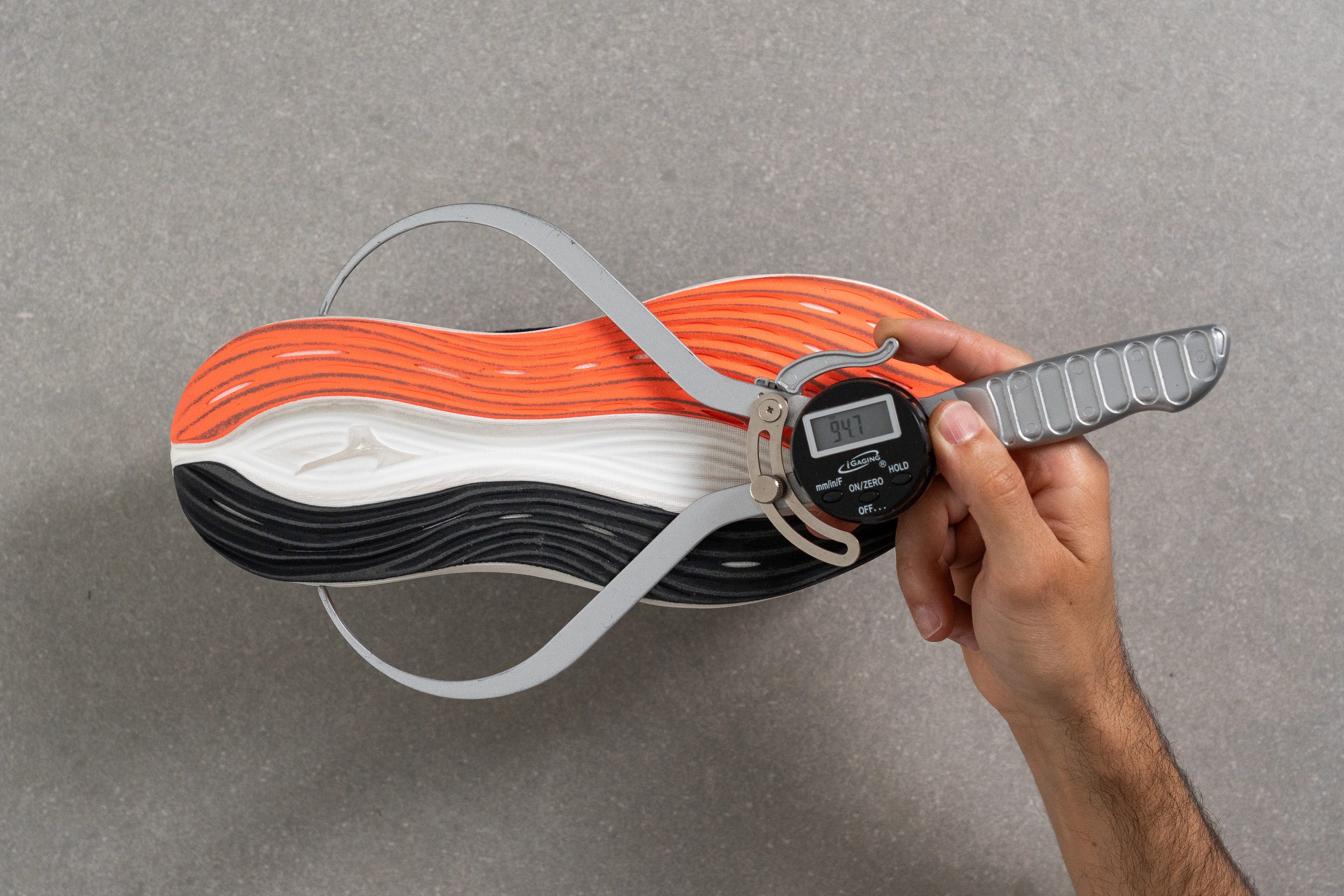
| Neo Zen | 94.7 mm |
| Average | 90.7 mm |
Durability
Toebox durability
The knit upper of the Neo Zen offers solid breathability, but even more impressive is its damage resistance. In our Dremel test, it scored a perfect 5/5, making it a standout choice in its price range.
| Neo Zen | 5 |
| Average | 2.6 |
Heel padding durability
The heel area also held up well—something we expected given the minimal padding. It didn’t hit the top score, but a 4/5 still beats the average shoe by a solid margin.
| Neo Zen | 4 |
| Average | 3.4 |
Outsole durability
The X10 rubber used by Mizuno delivered an impressive result in our durability test. Despite its softness, it showed only 0.9 mm of wear—something we’ve seen in very few outsoles with this kind of formulation.
| Neo Zen | 0.9 mm |
| Average | 1.1 mm |
Outsole thickness
At 2.7 mm, it strikes a solid balance—light enough to reduce weight, yet thick enough to handle regular wear without breaking down too quickly.
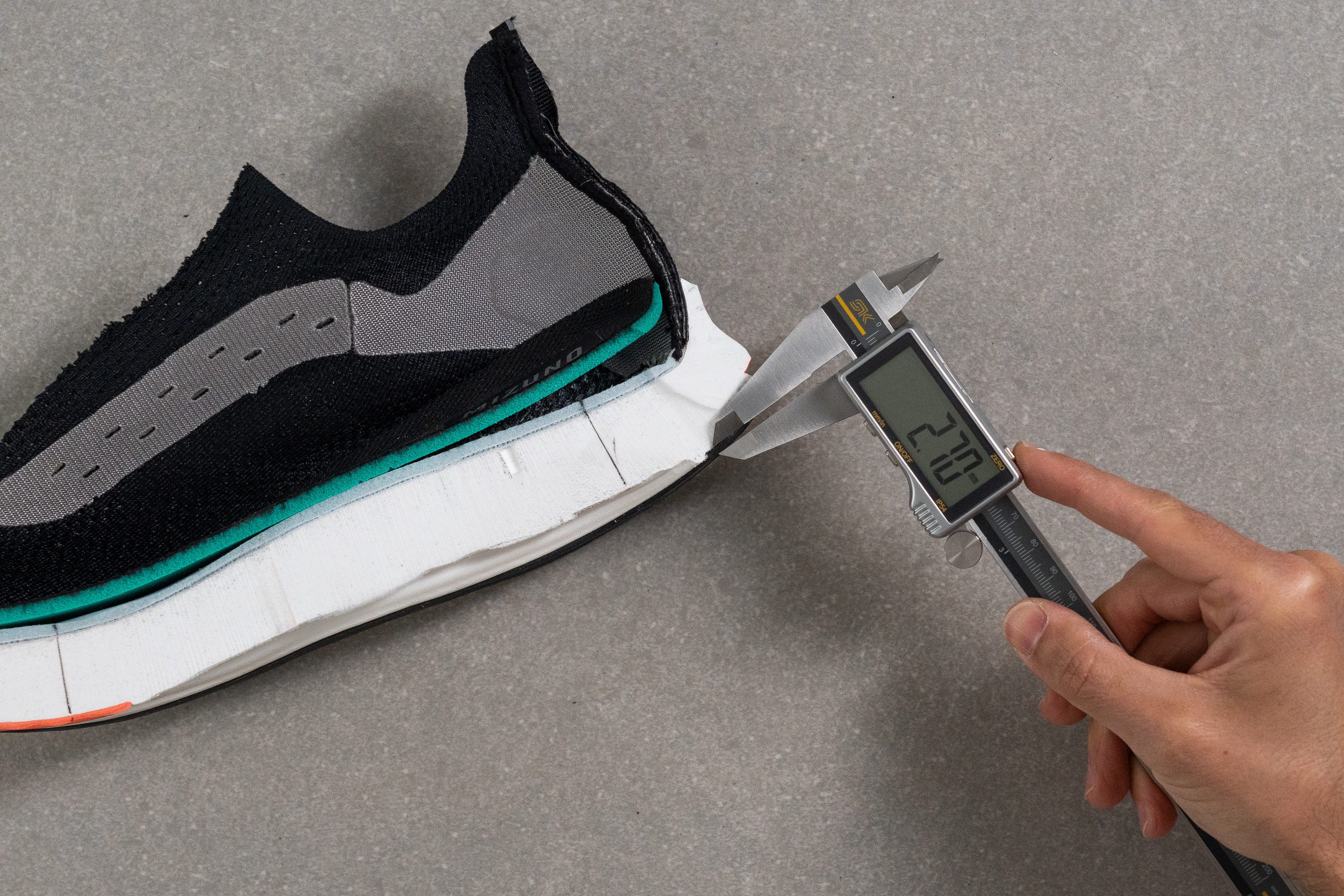
| Neo Zen | 2.7 mm |
| Average | 3.2 mm |
Misc
Insole thickness
One of the few things in the Neo Zen that doesn’t stand out is the insole—it’s pretty standard in both material and feel, with an average thickness of 4.8 mm.
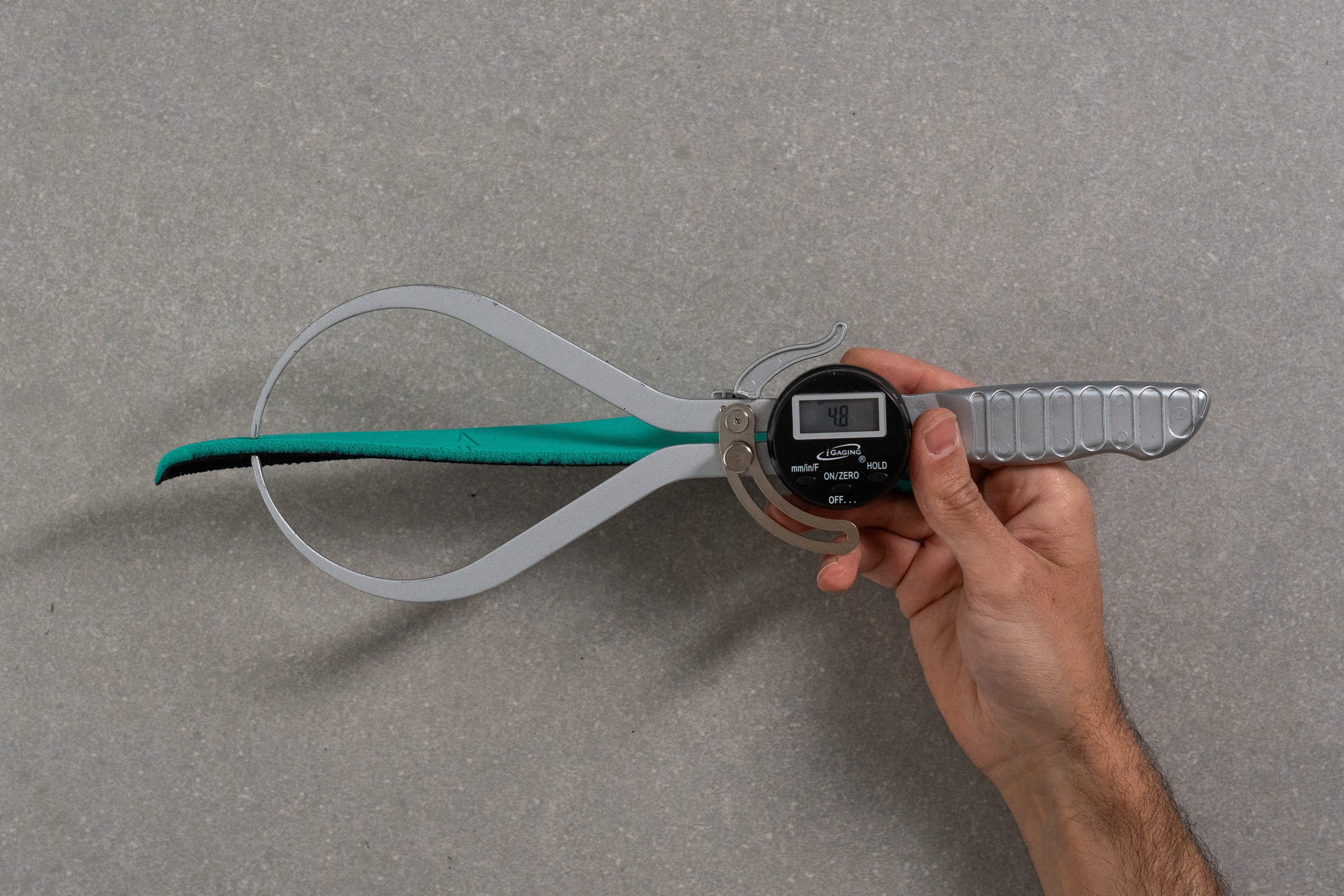
| Neo Zen | 4.8 mm |
| Average | 4.5 mm |
Removable insole
Looking to dial up the cushioning in the Neo Zen, or maybe tone it down a bit? The removable stock insole lets you swap it out for your preferred option, whether it's plusher or more minimal.
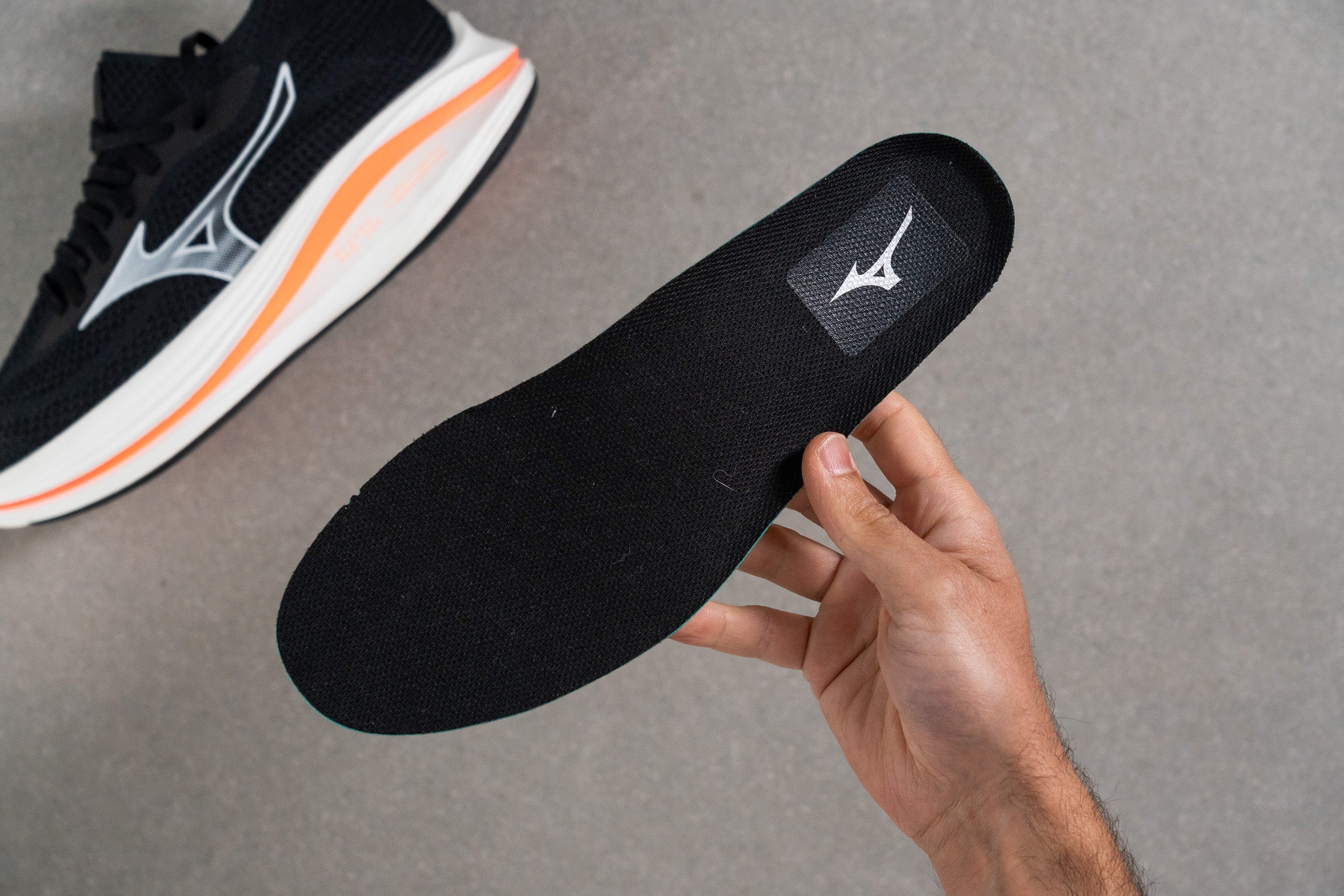
| Neo Zen | Yes |
Midsole softness in cold (%)
While PEBA stay almost the same after 20 minutes in our freezer, the Neo Zen got 33% firmer—worse than the average. If this worries you, check the PEBA-based ASICS Superblast 2 instead.
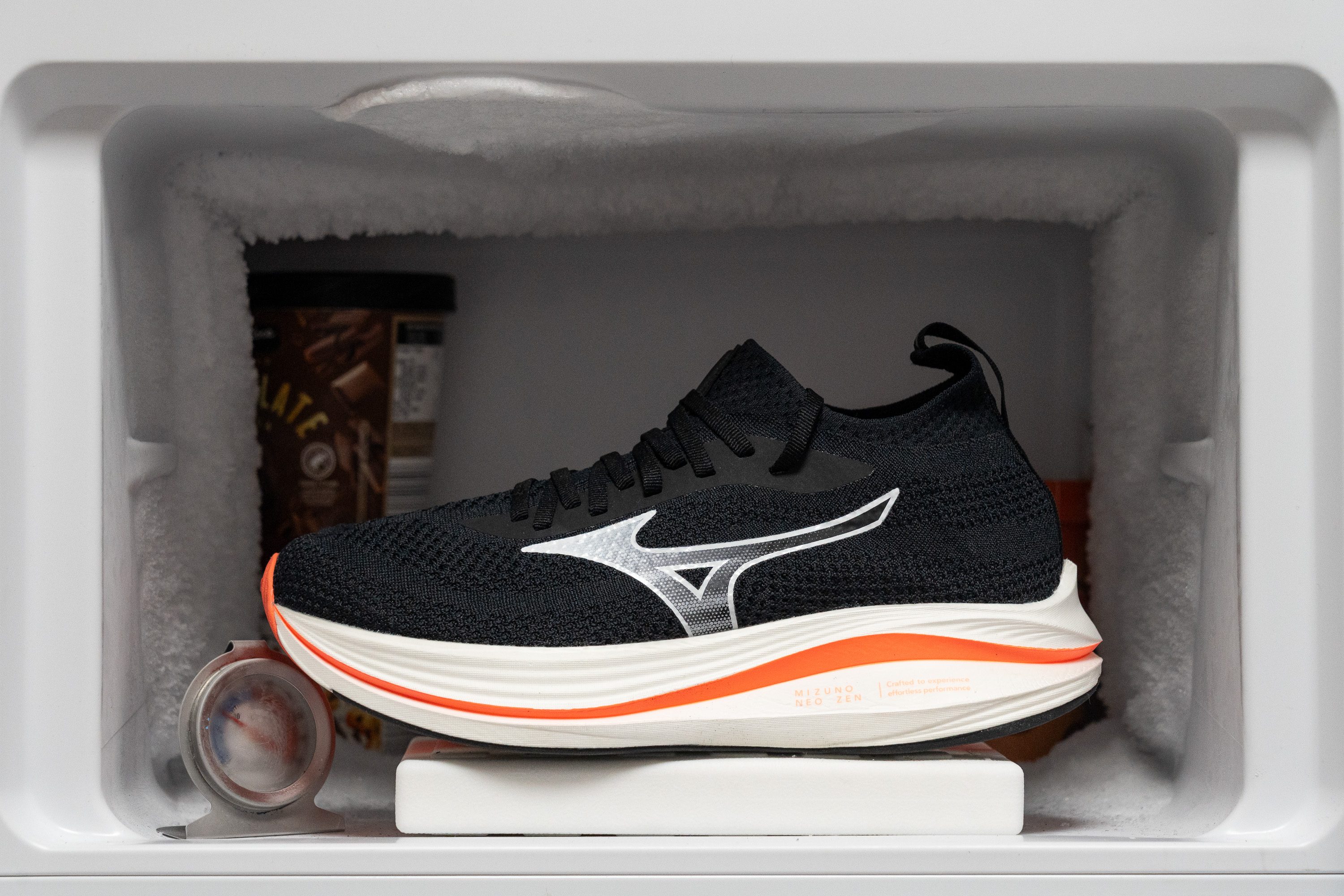
| Neo Zen | 33% |
| Average | 24% |
Reflective elements
Mizuno nailed a clever double win in the heel design by using a reflective strip to conceal the stitching while seamlessly extending it into the finger-loop heel tab.
| Neo Zen | Yes |
Tongue padding
The Neo Zen’s integrated tongue doesn’t offer much padding at 4.1 mm. Therefore, it won’t feel like a cushion across the instep, yet unless you’re extremely sensitive to pressure in that area, it should hold up fine even during long runs.
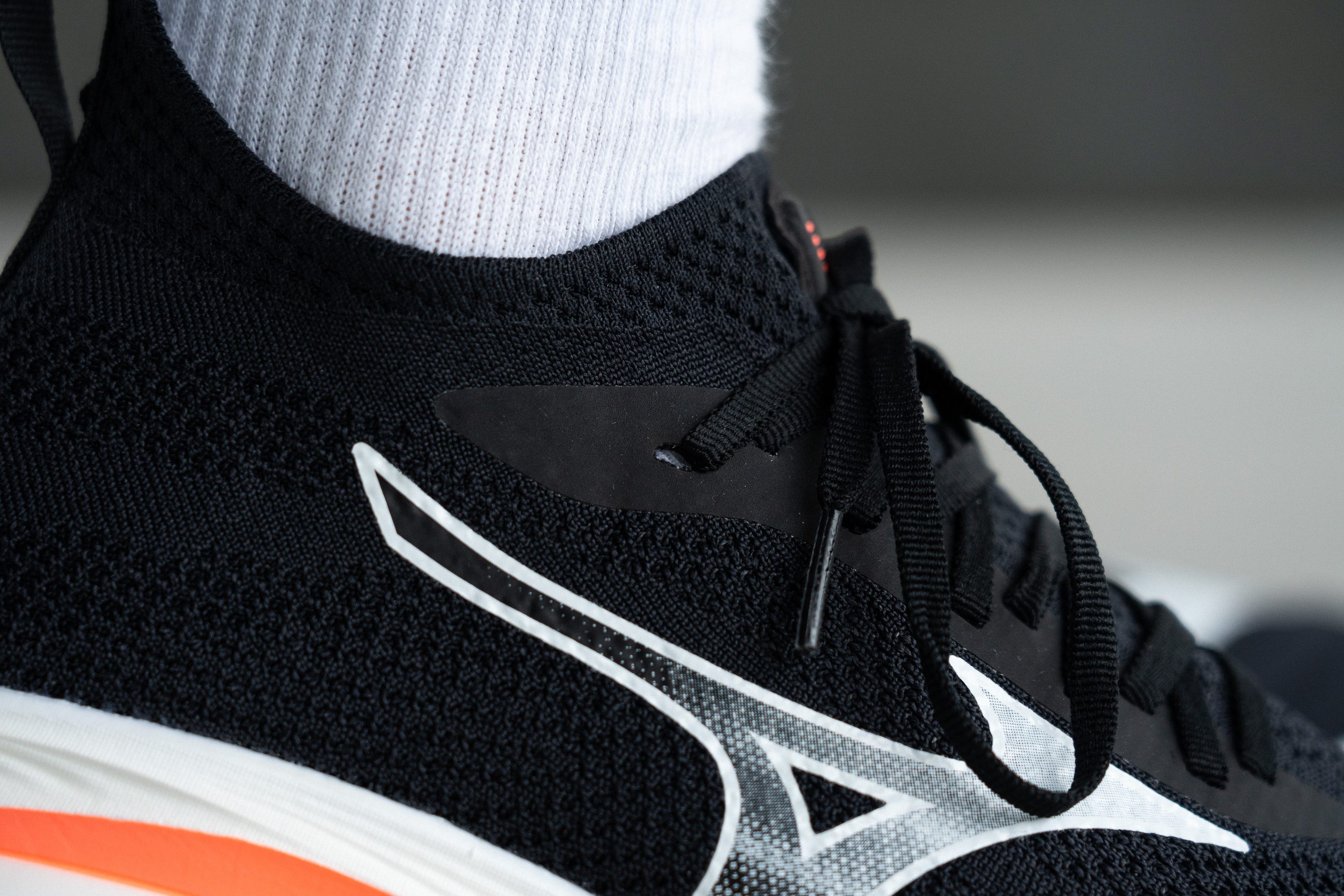
The lacing setup stands out with its minimalist, stitch-free approach, tailored to match the one-piece upper. There’s no extra eyelet for a runner’s knot, but that’s intentional—the snug, sock-like construction already locks the heel in securely without needing extra reinforcement.
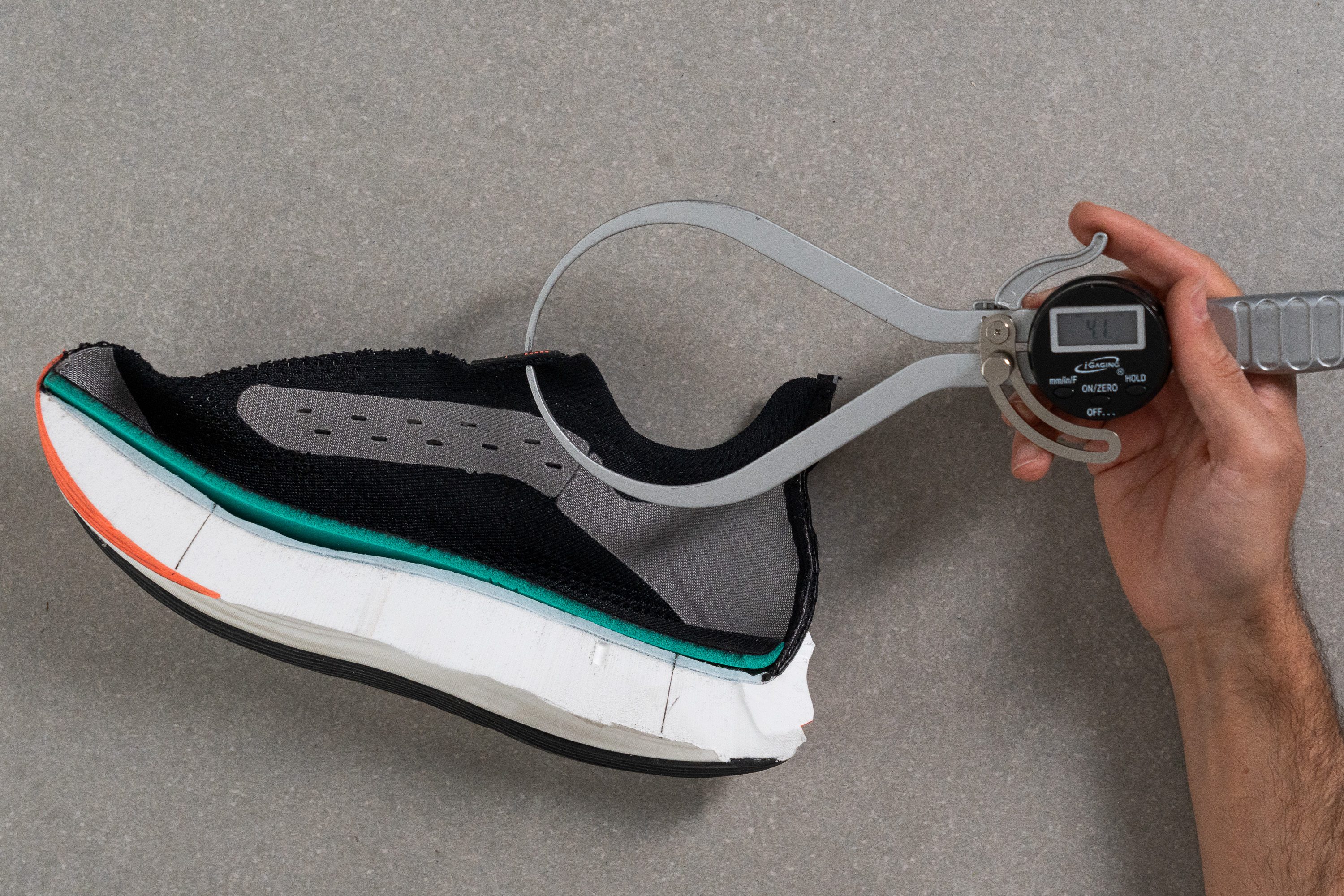
| Neo Zen | 4.1 mm |
| Average | 5.8 mm |
Tongue: gusset type
The sock-like upper wraps the foot snugly and eliminates any chance of tongue shifting, thanks to its fully integrated design—similar to what made the Nike Alphafly 3 and earlier generations stand out.
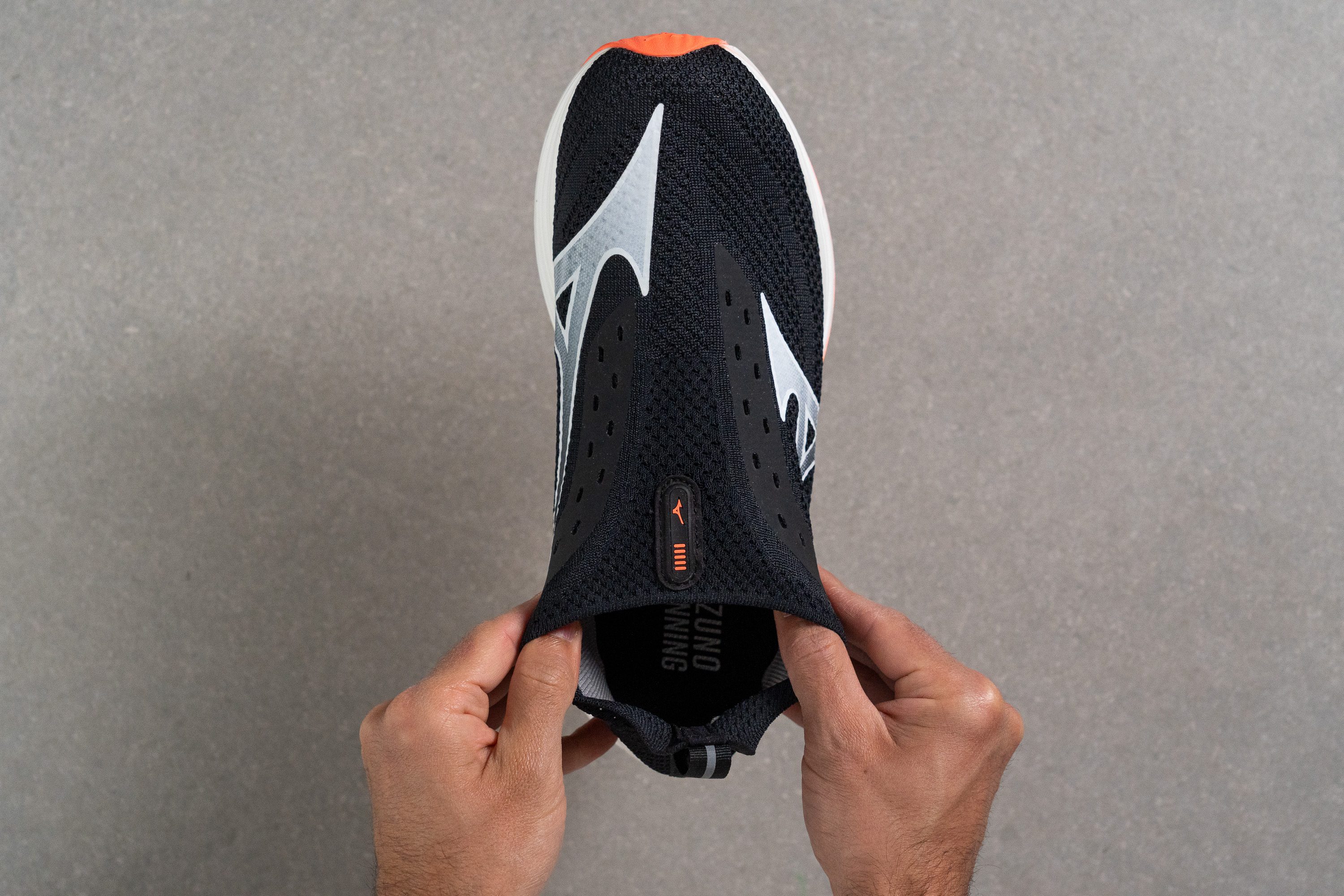
| Neo Zen | Sock like |
Price
The Neo Zen brings something rare for its price—a lively, fun ride paired with a sock-like knit upper. If that’s what you’re after, its value is hard to beat, especially given its competitive MSRP.
| Neo Zen | $150 |
| Average | $152 |
Heel tab
Like many running shoes with knit uppers, the Neo Zen features a heel tab that makes slipping them on a whole lot easier.
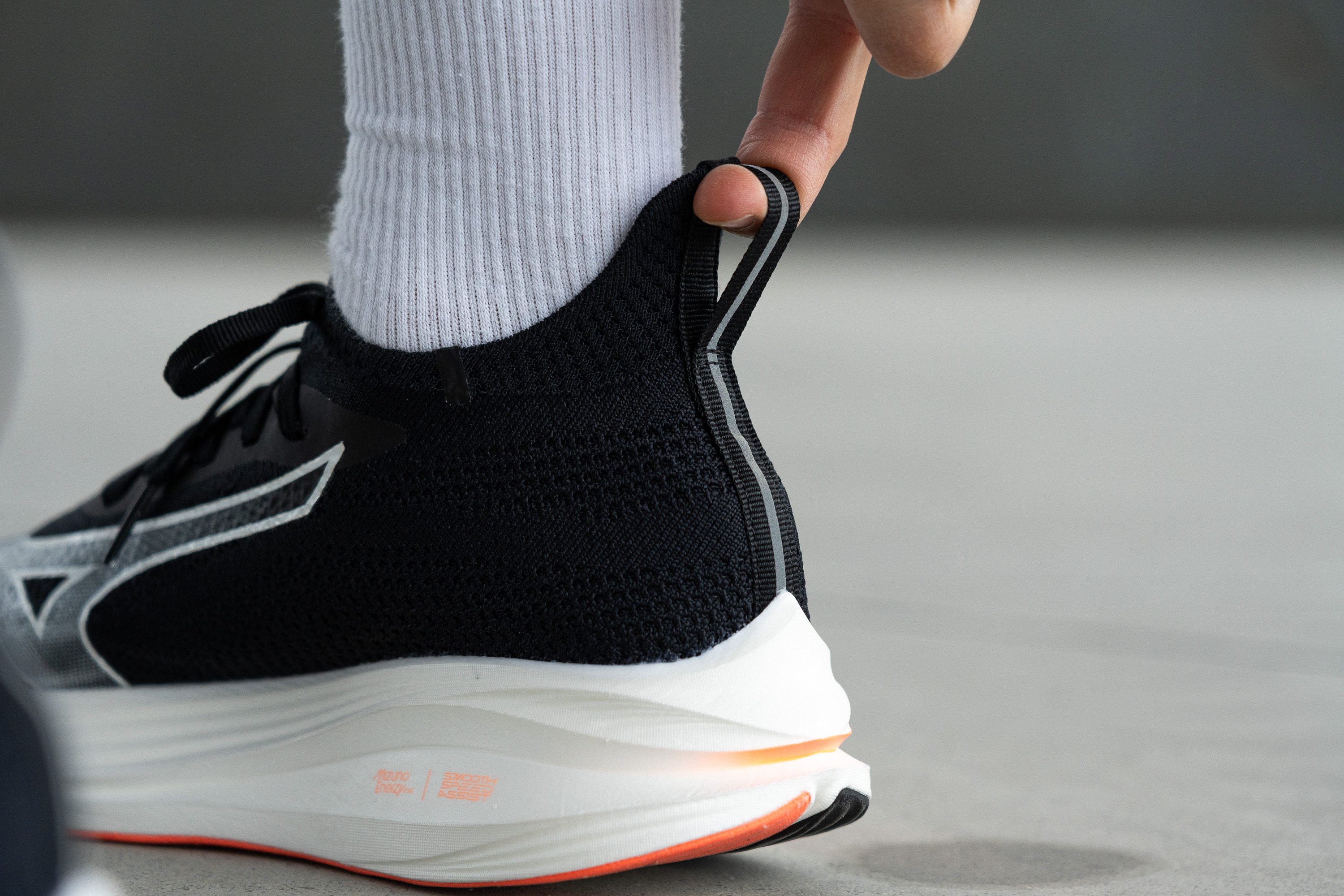
| Neo Zen | Finger loop |

